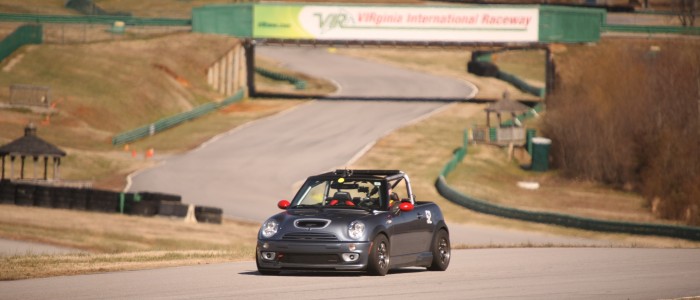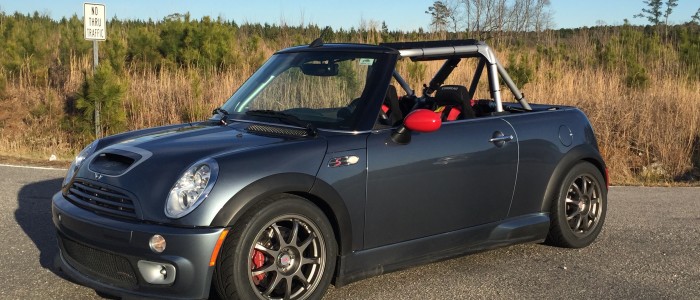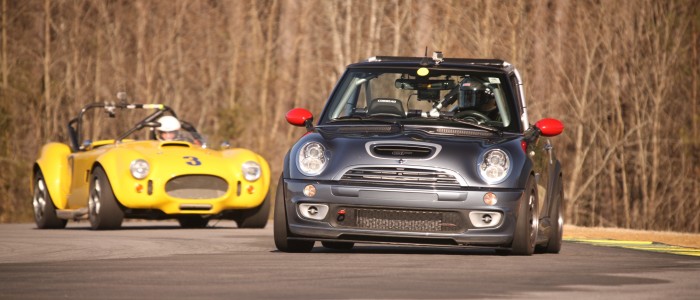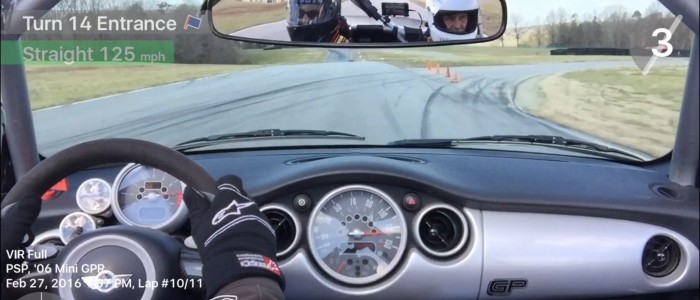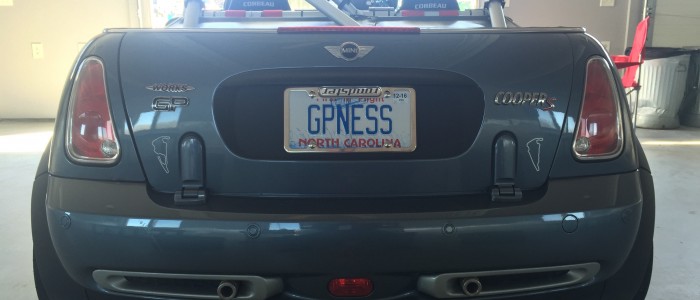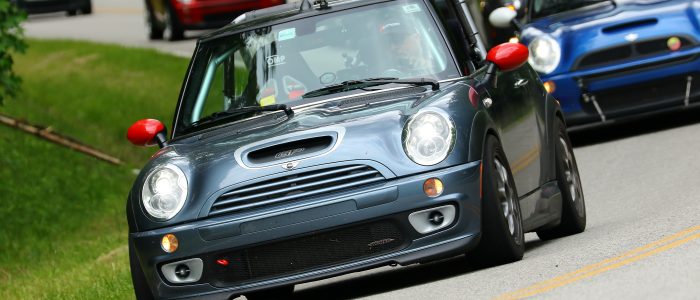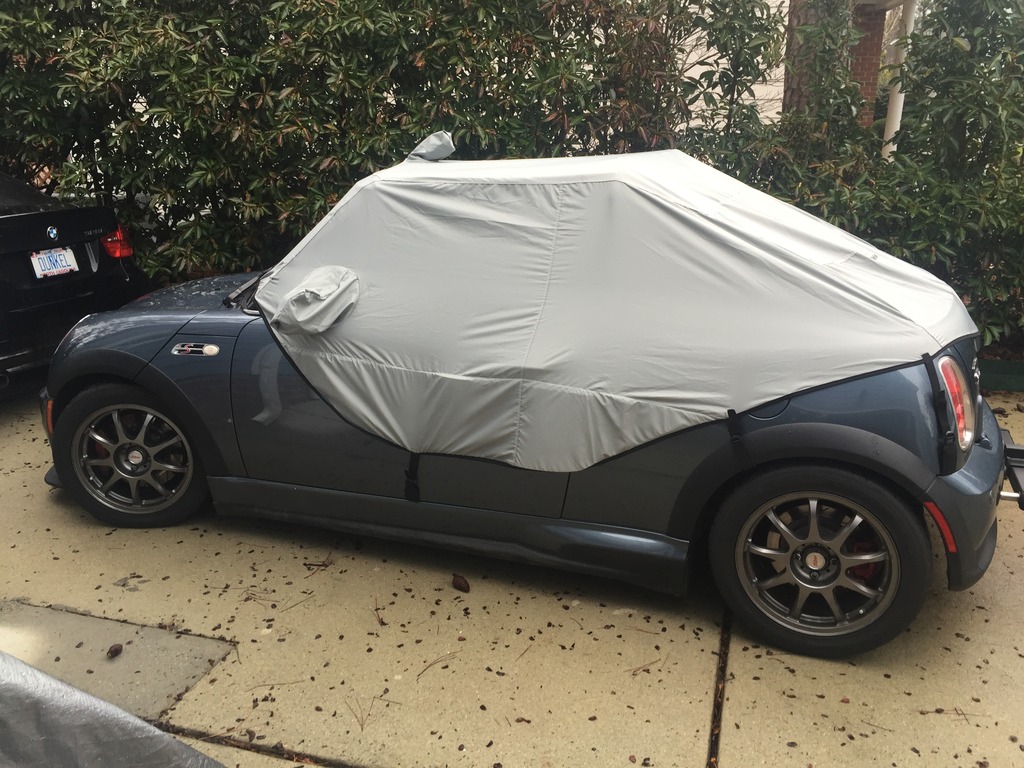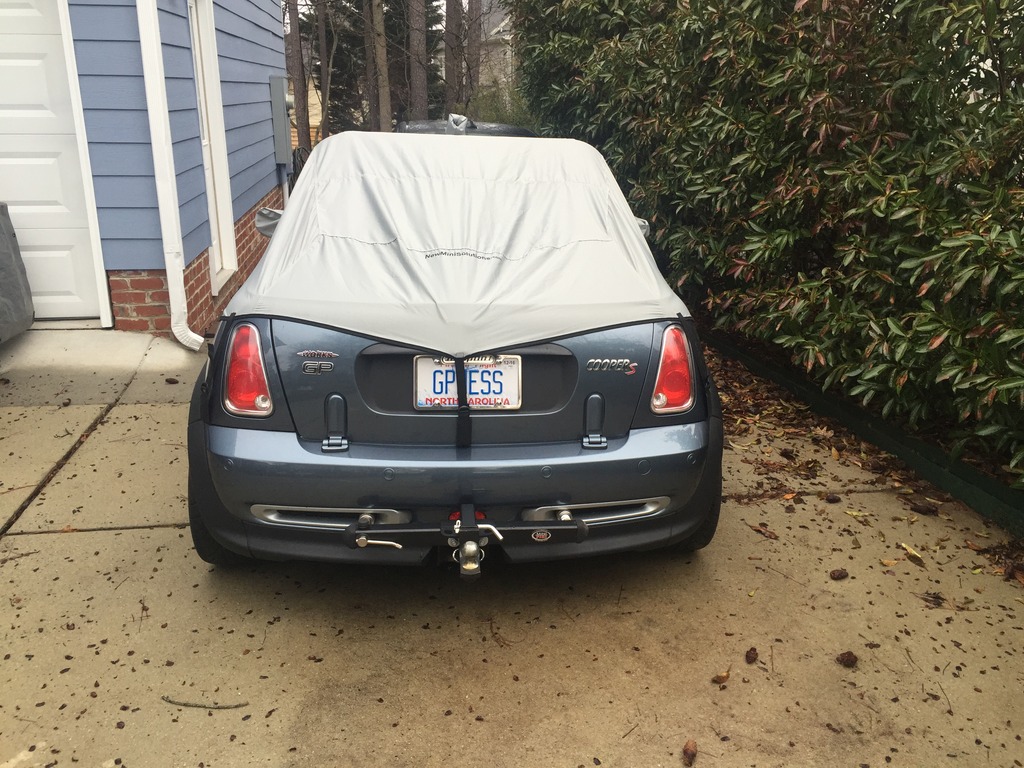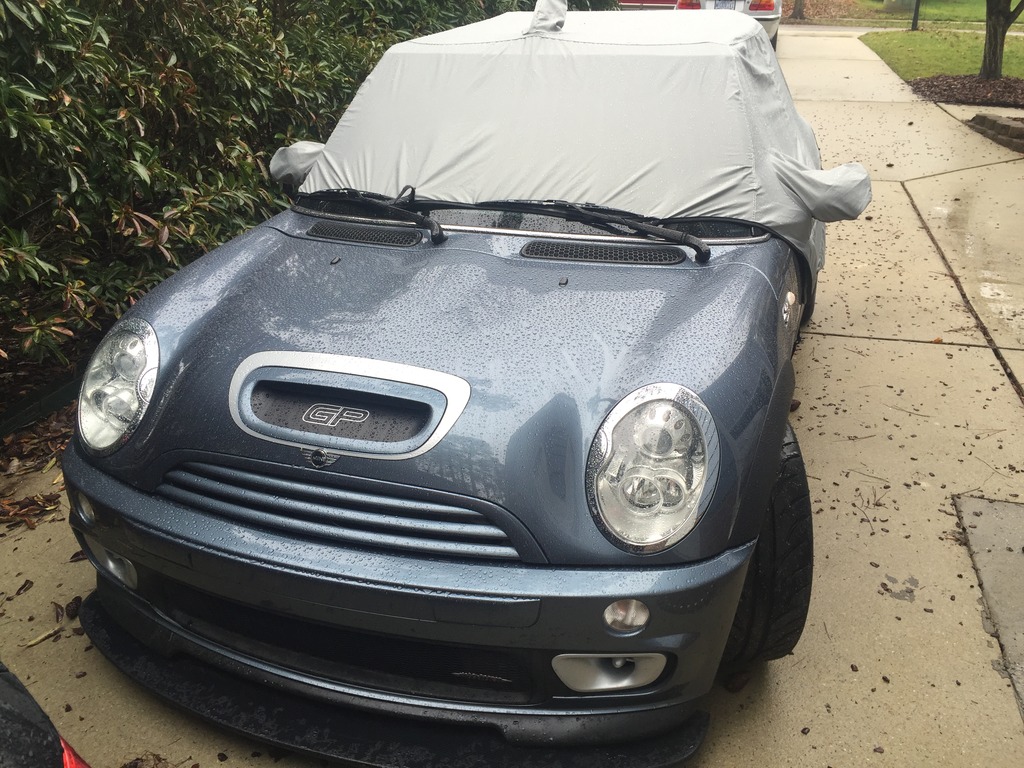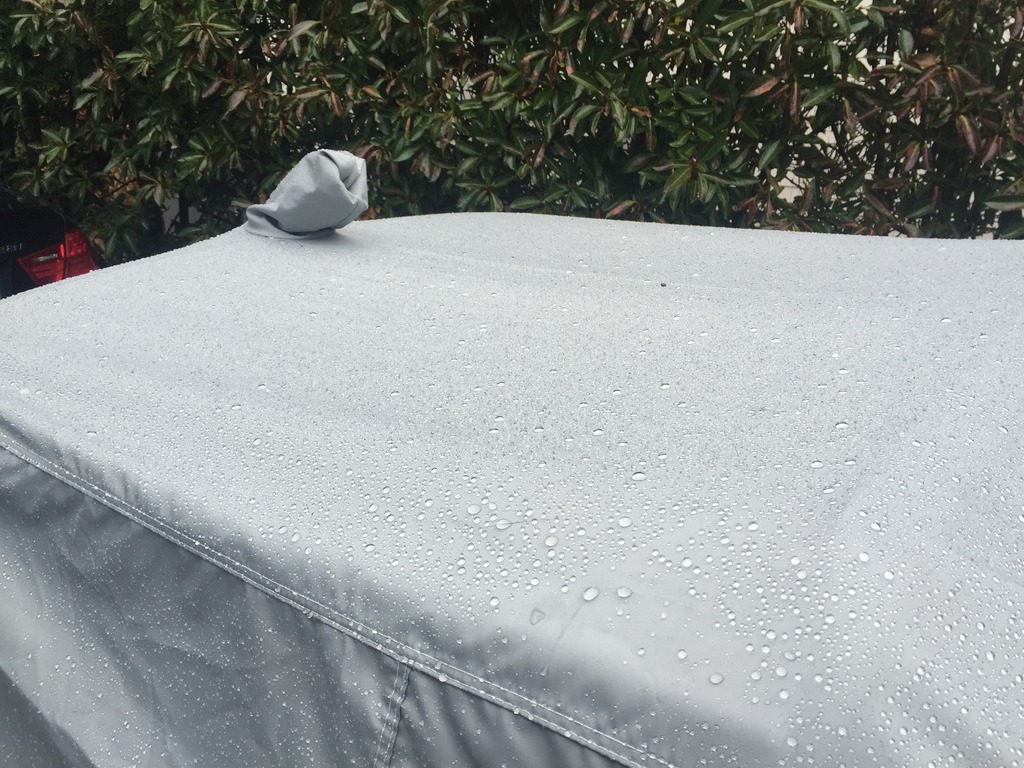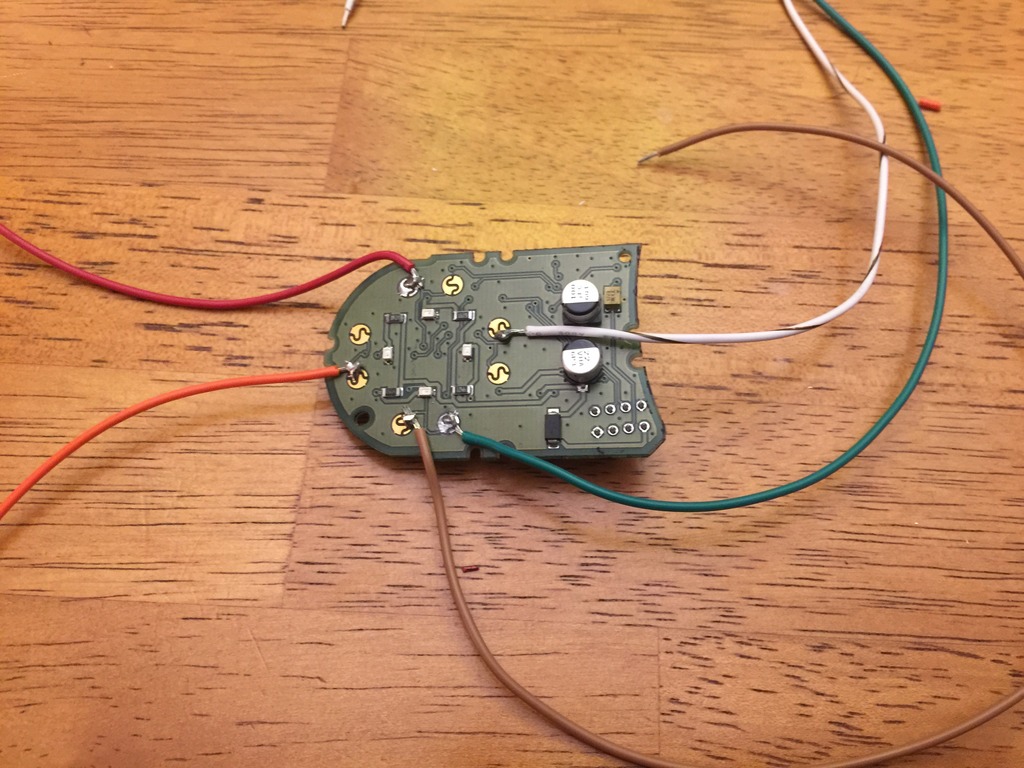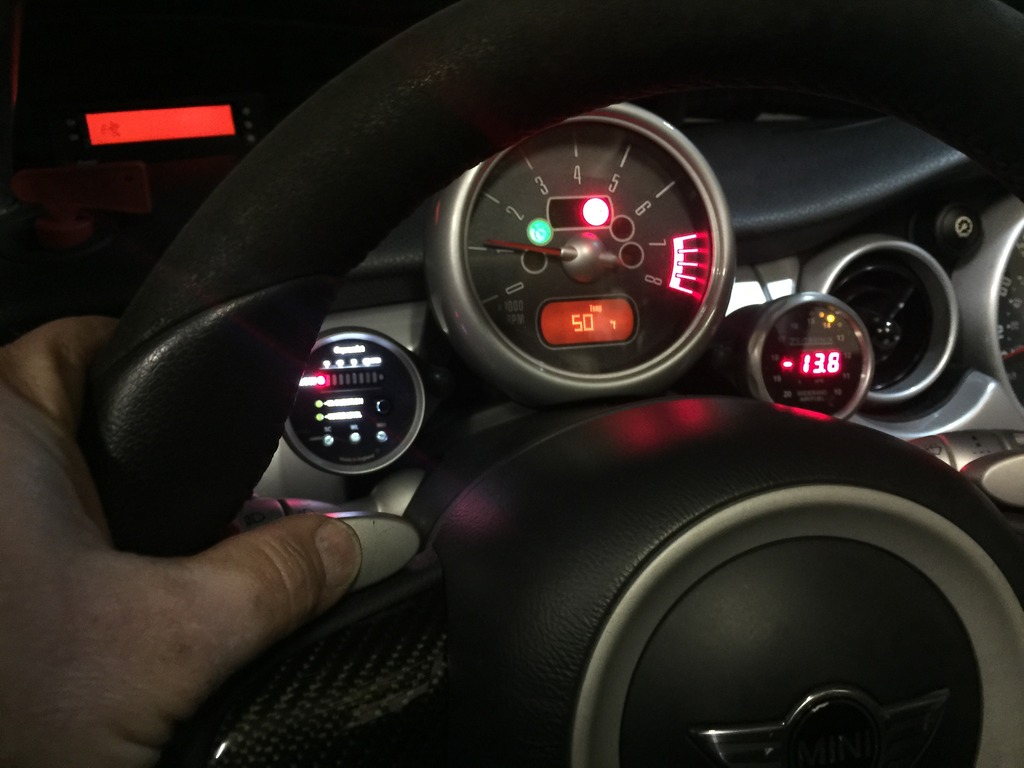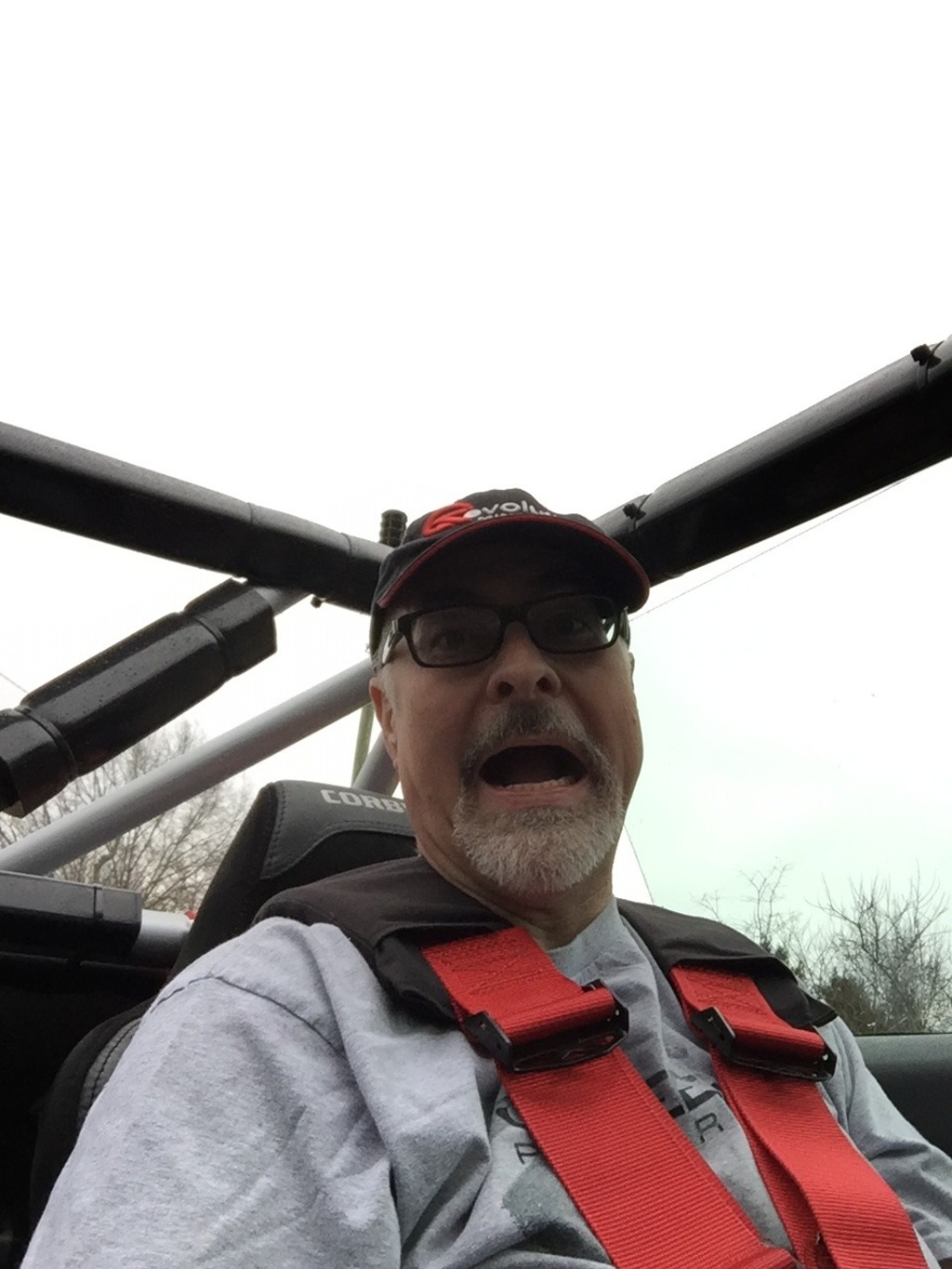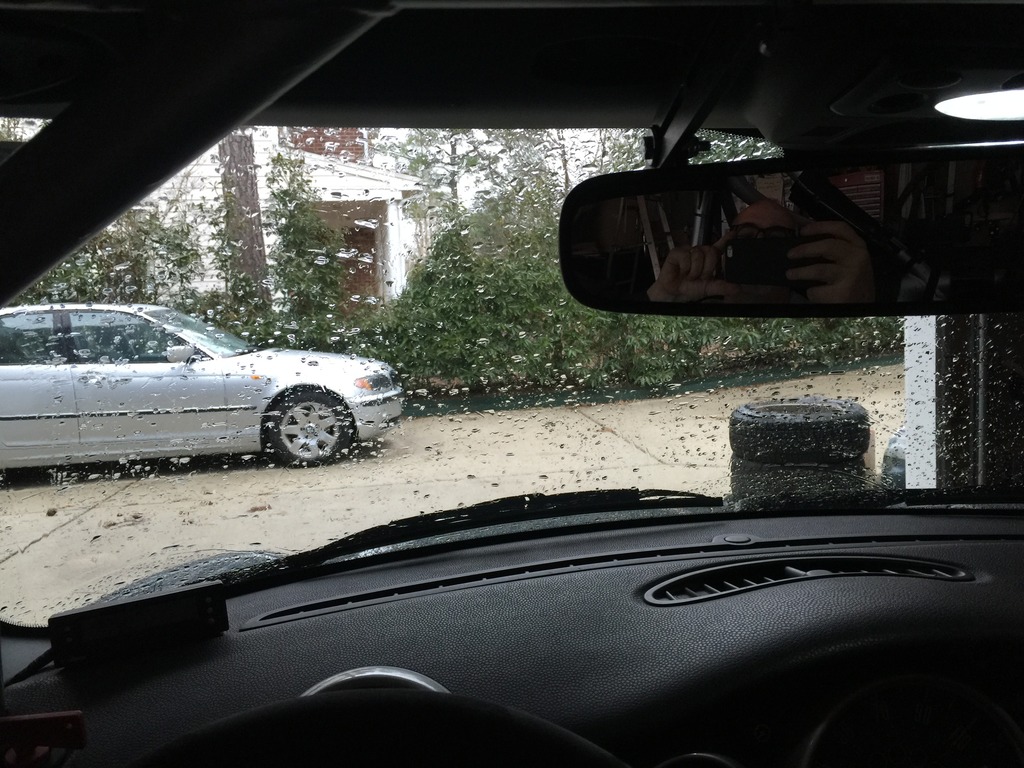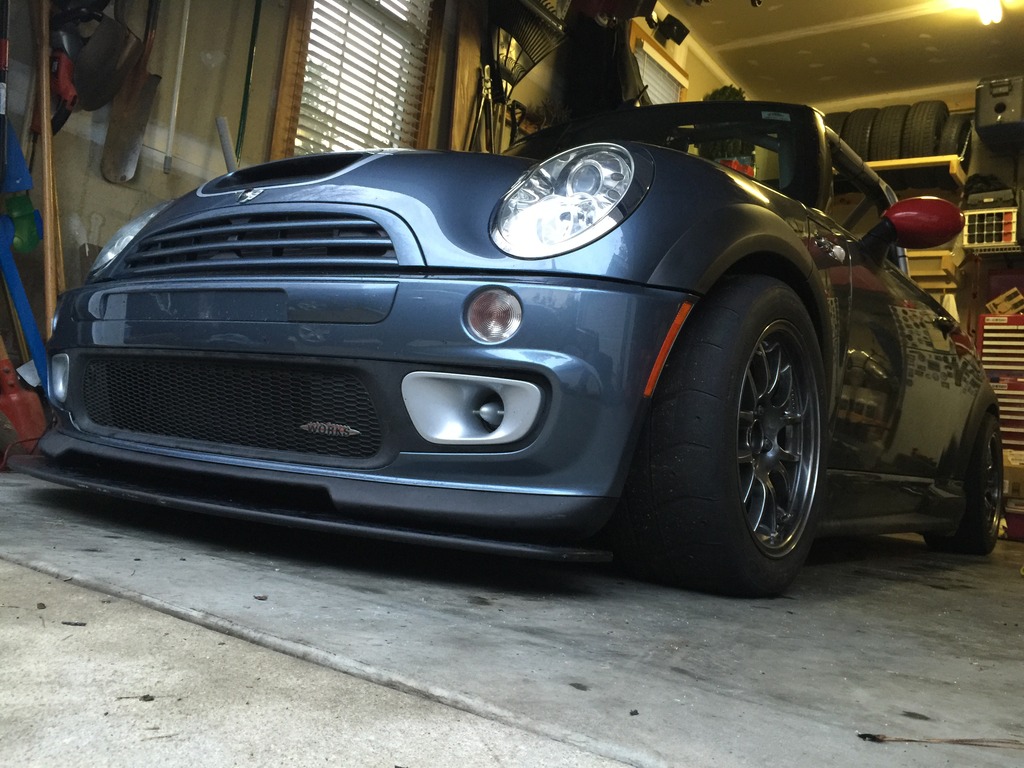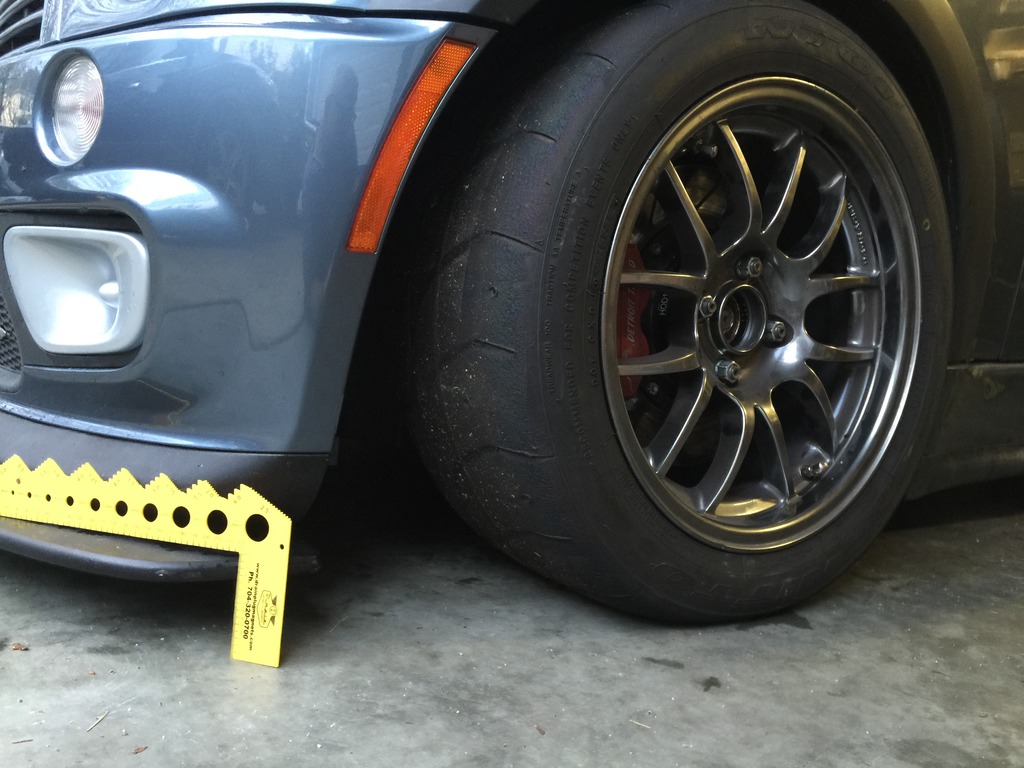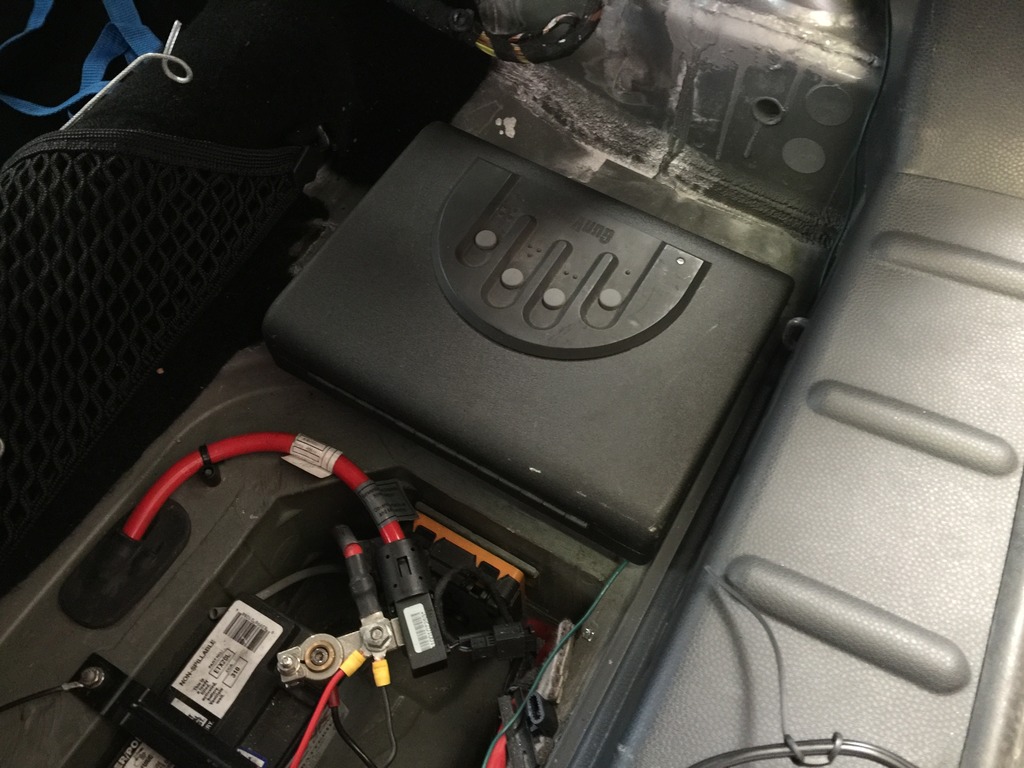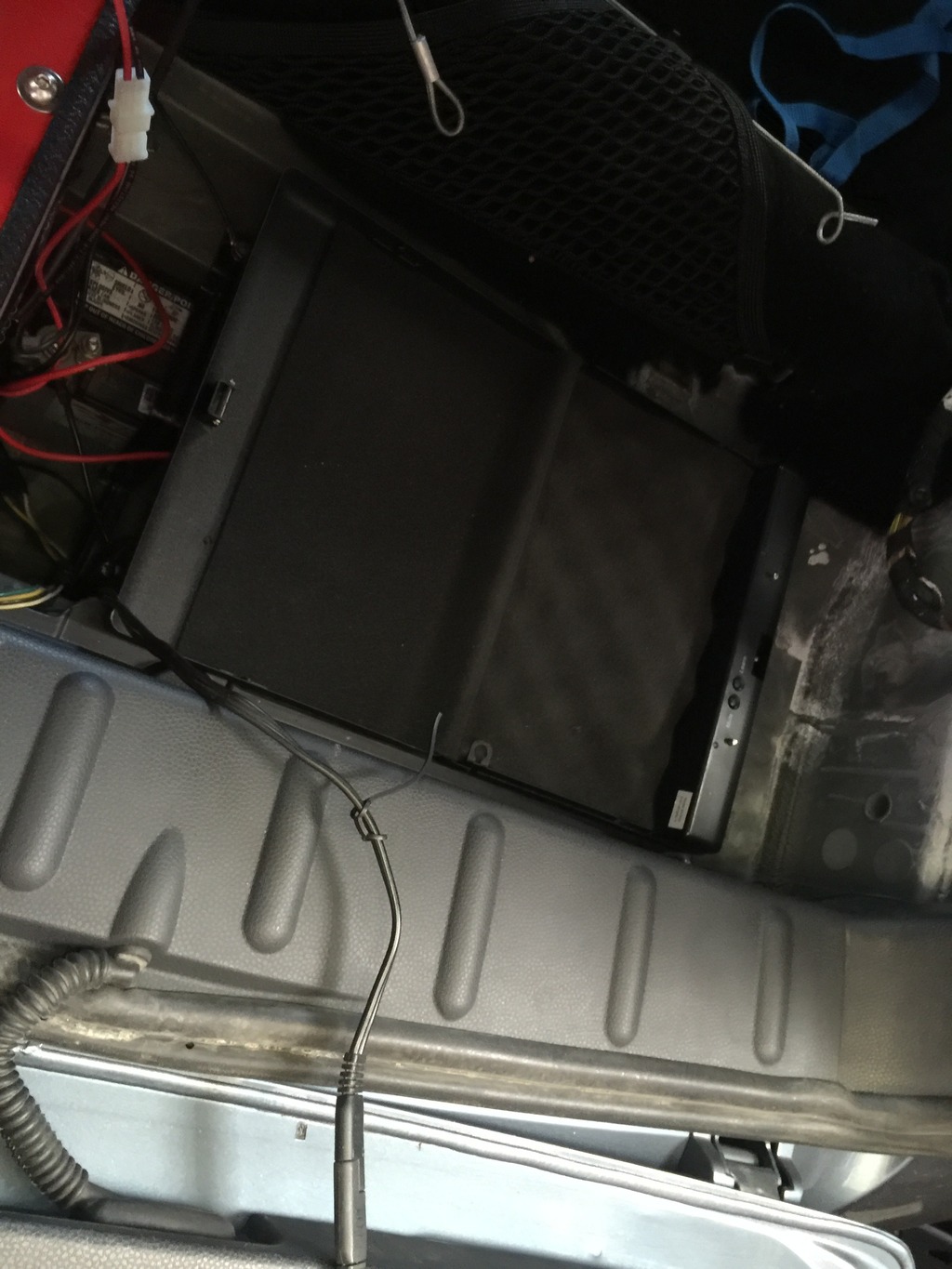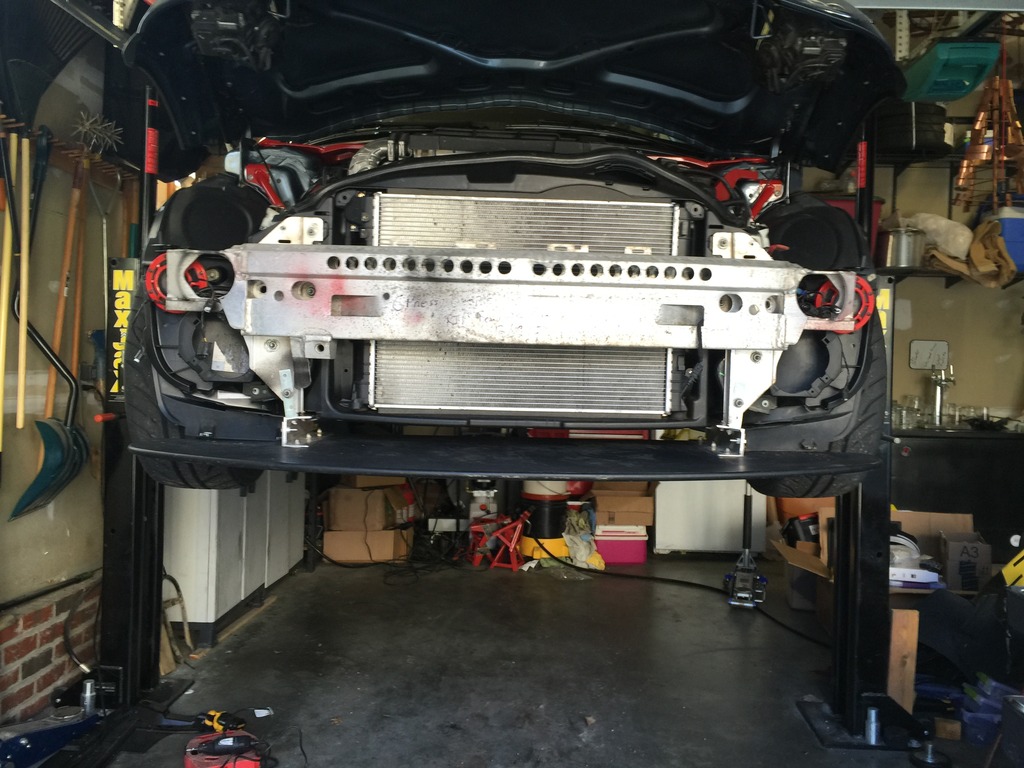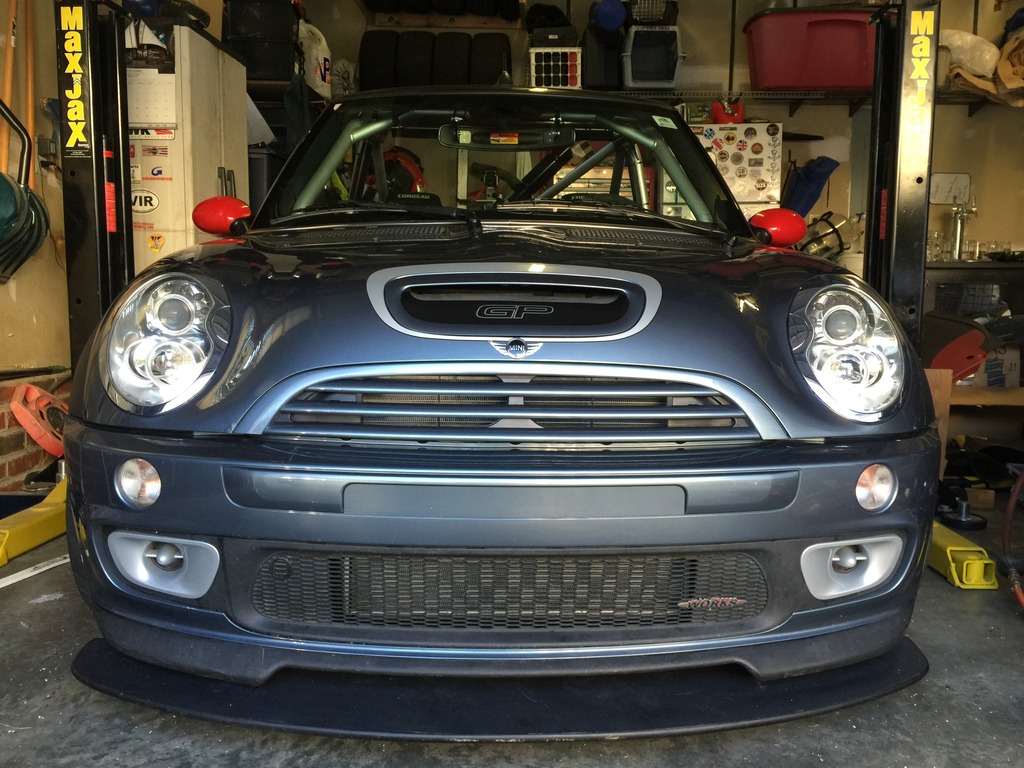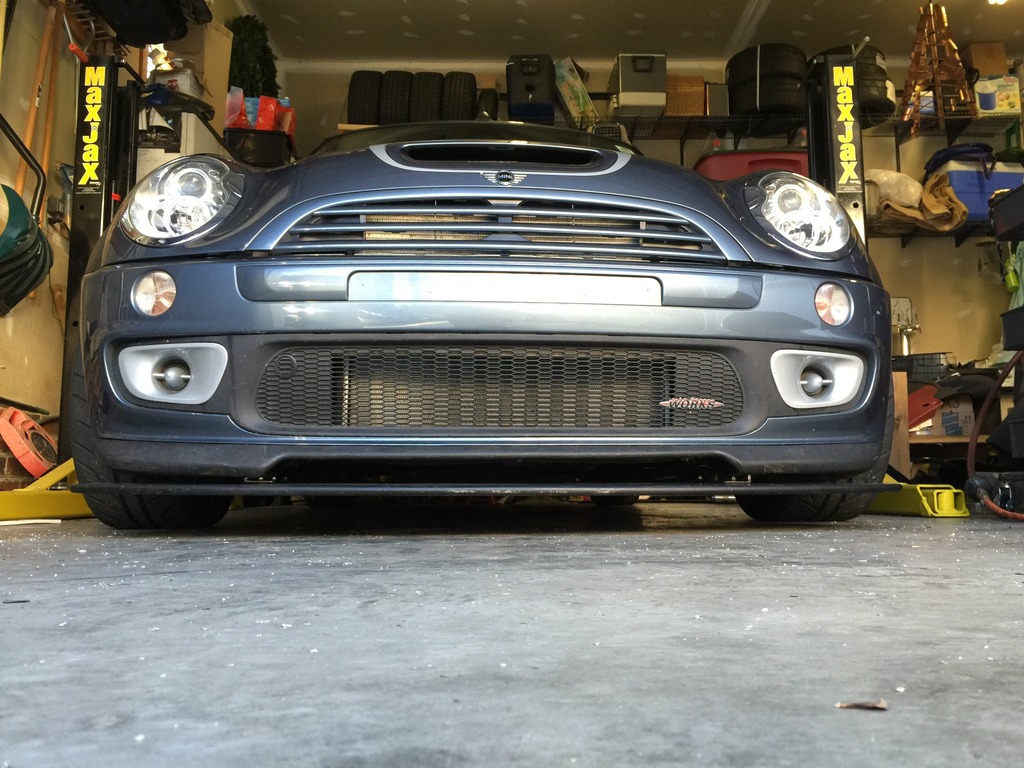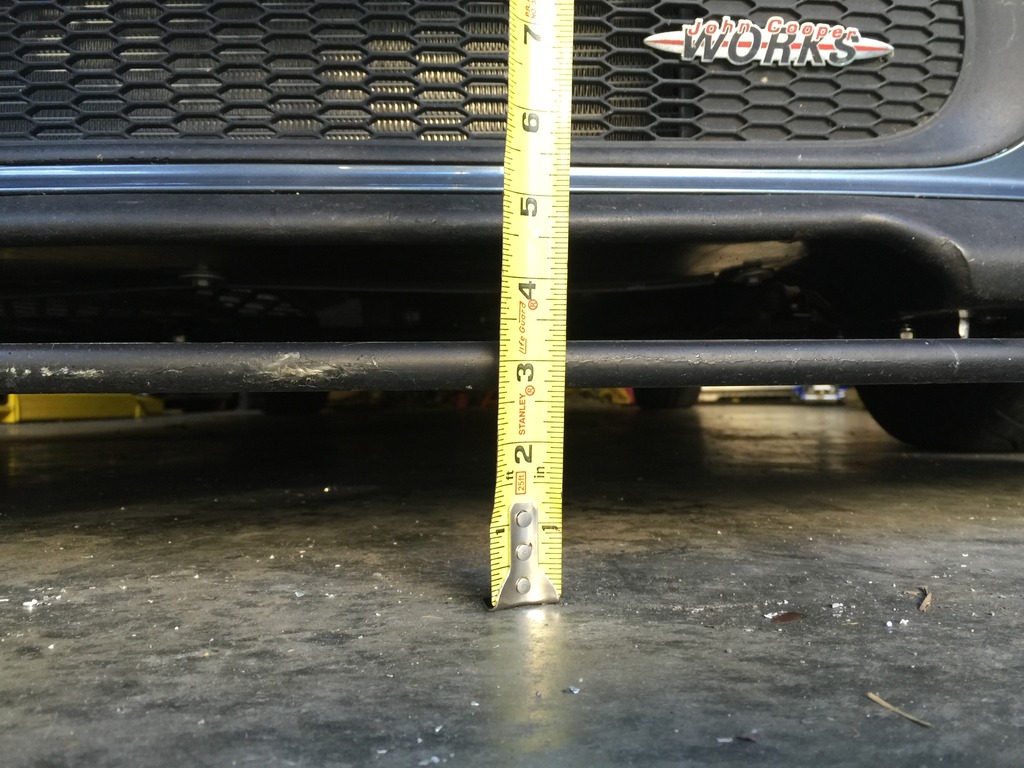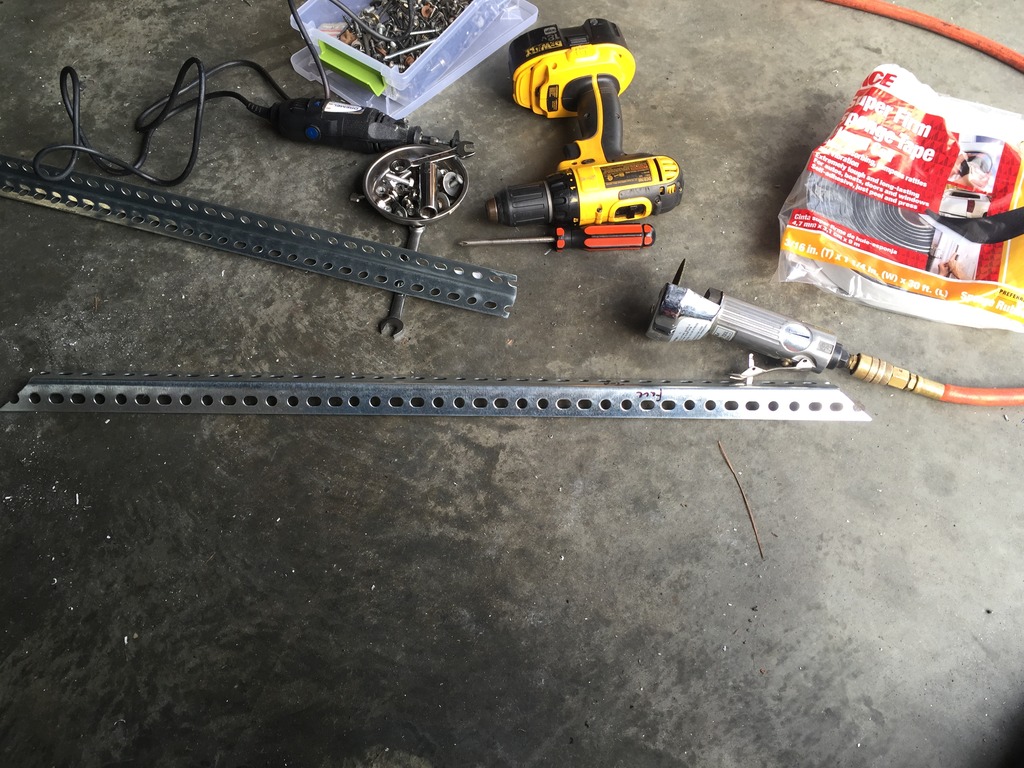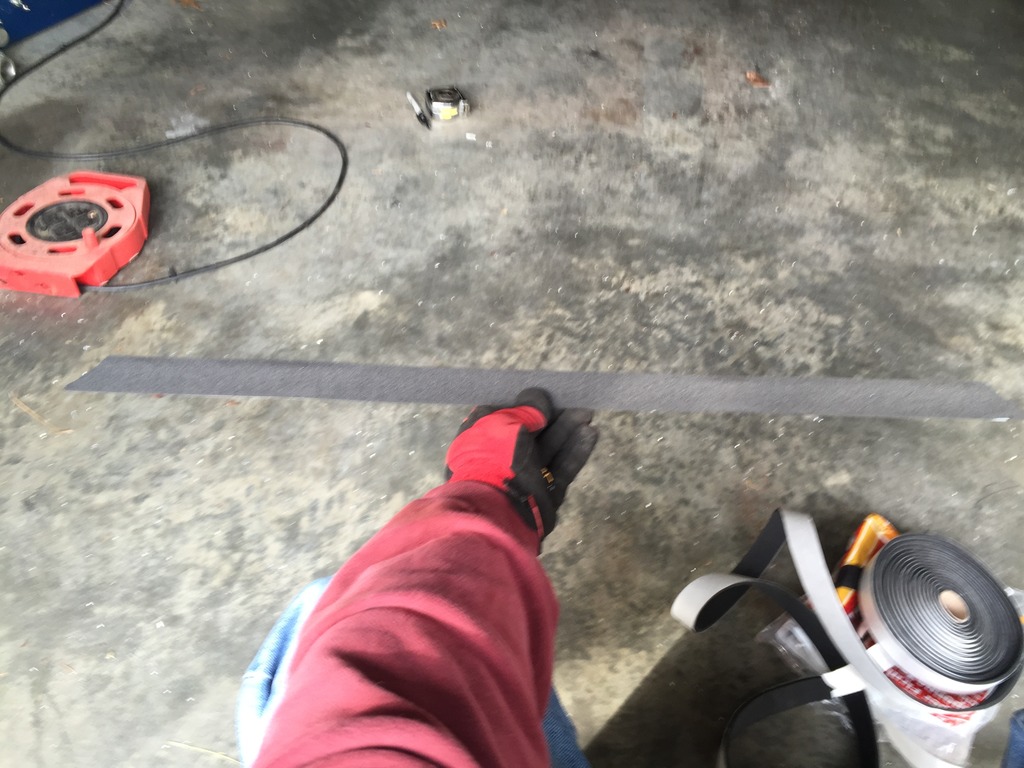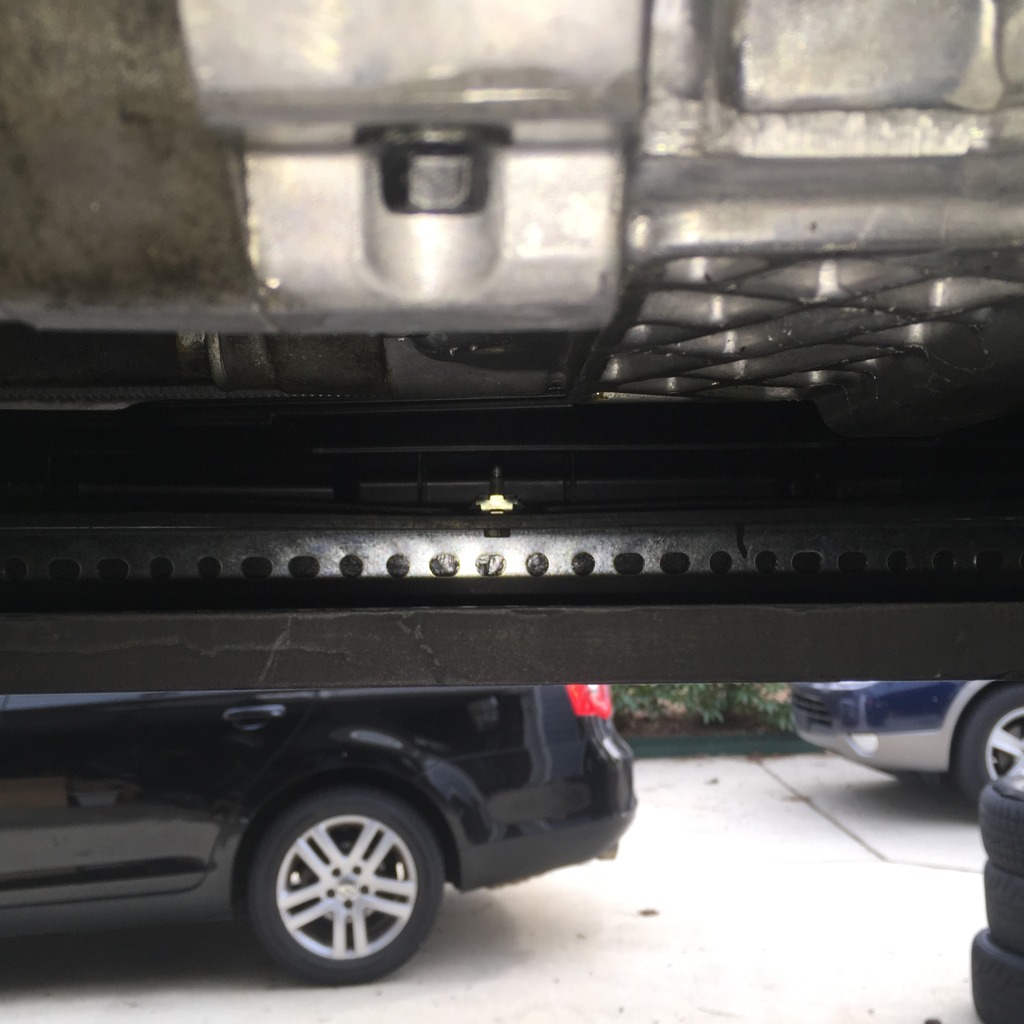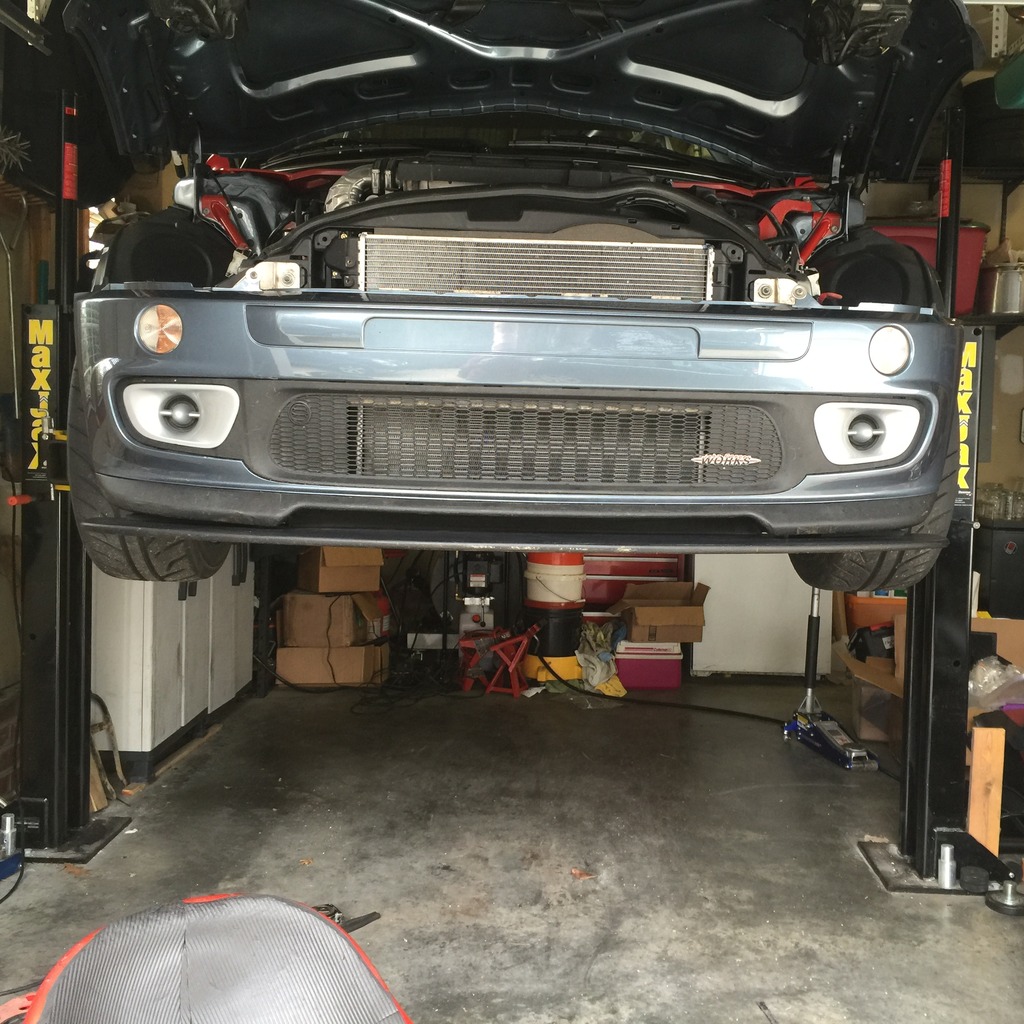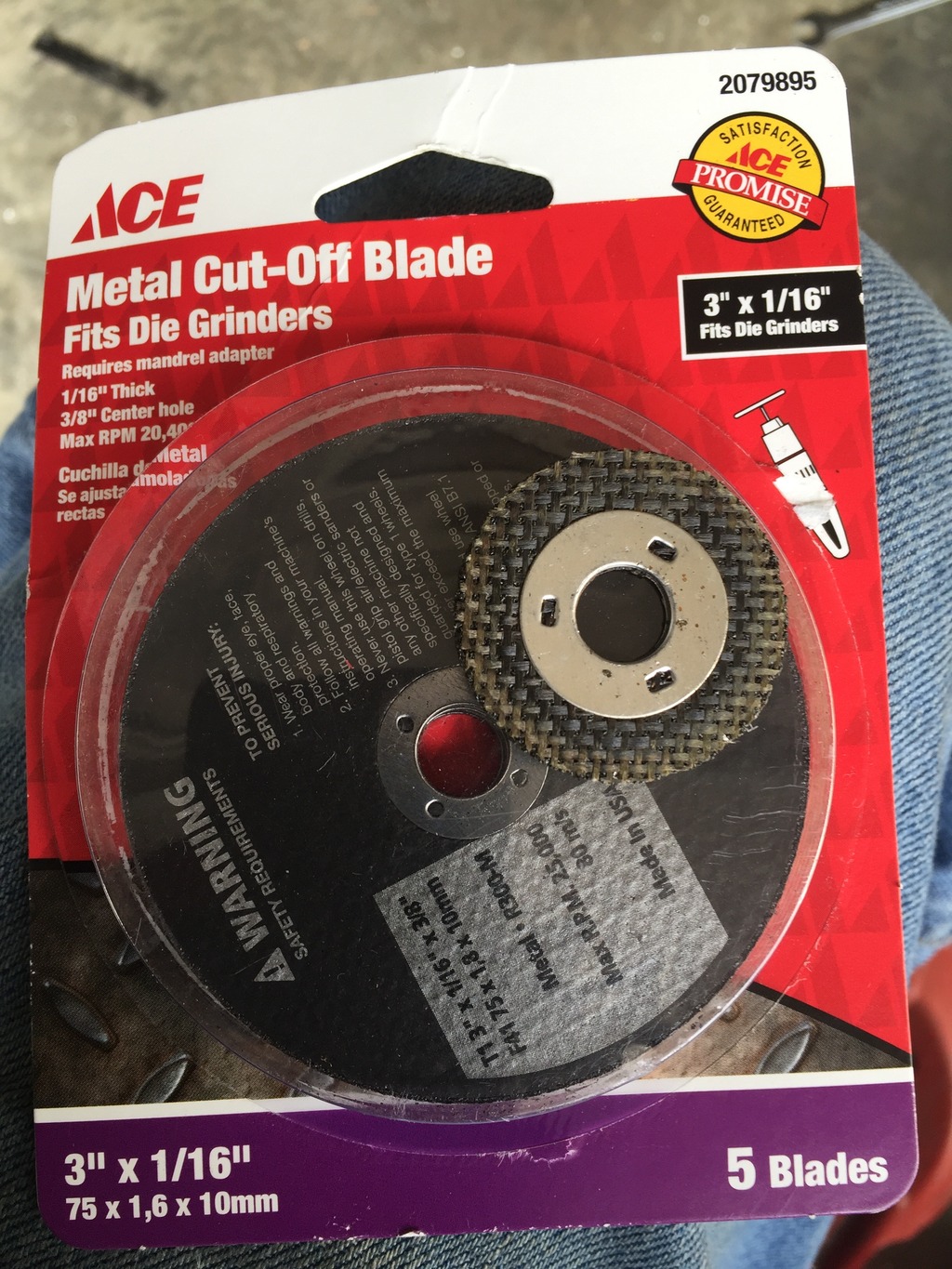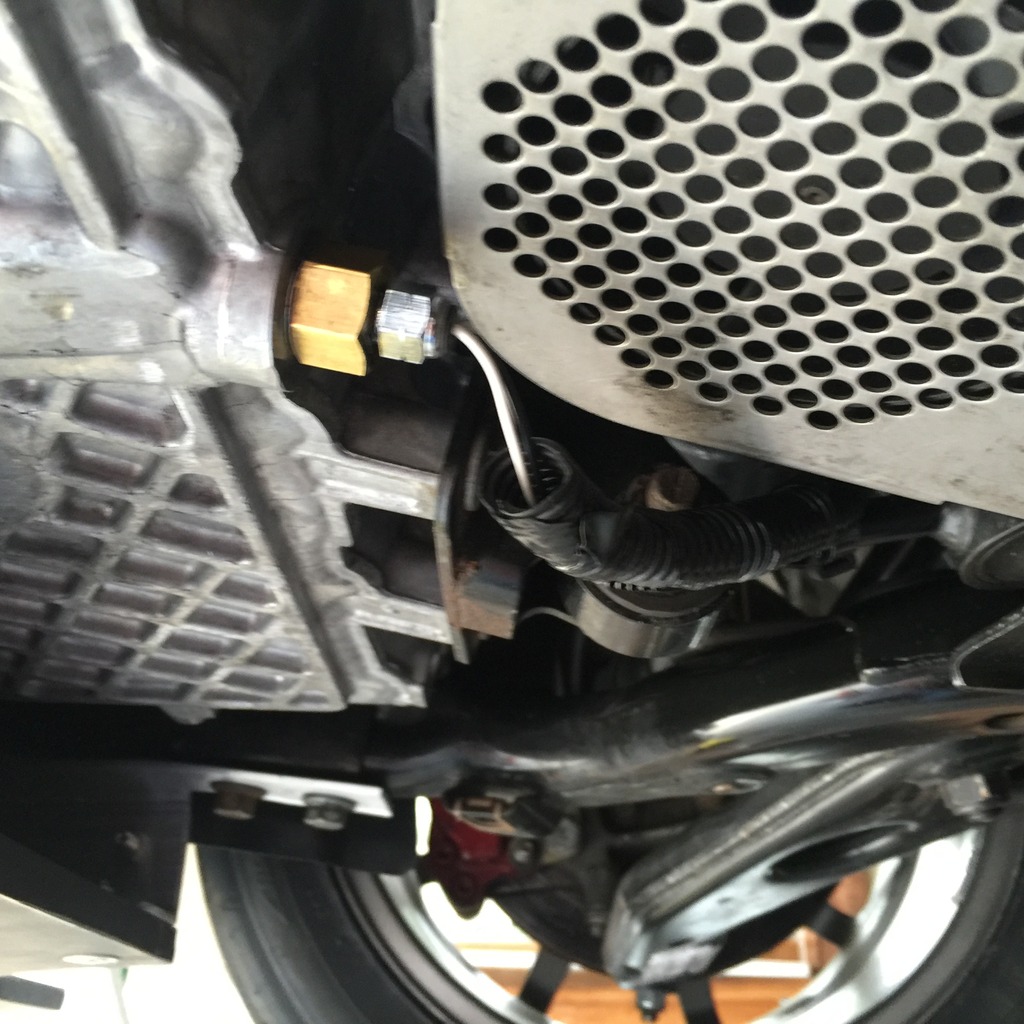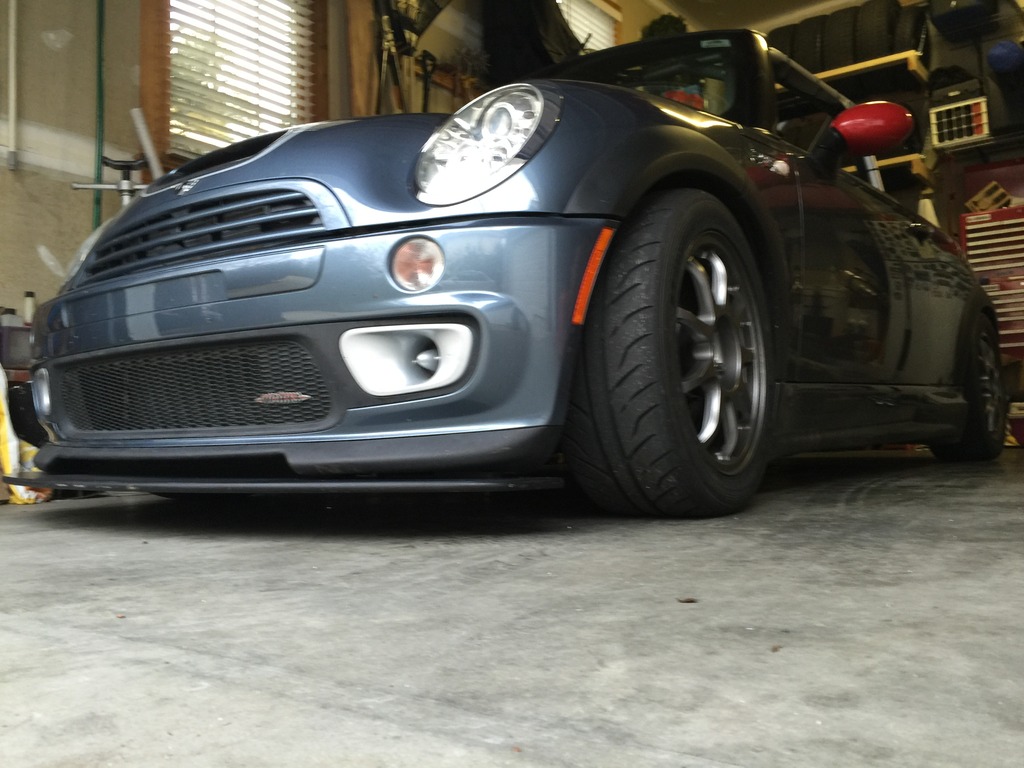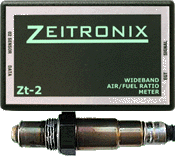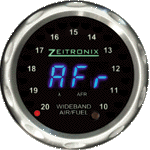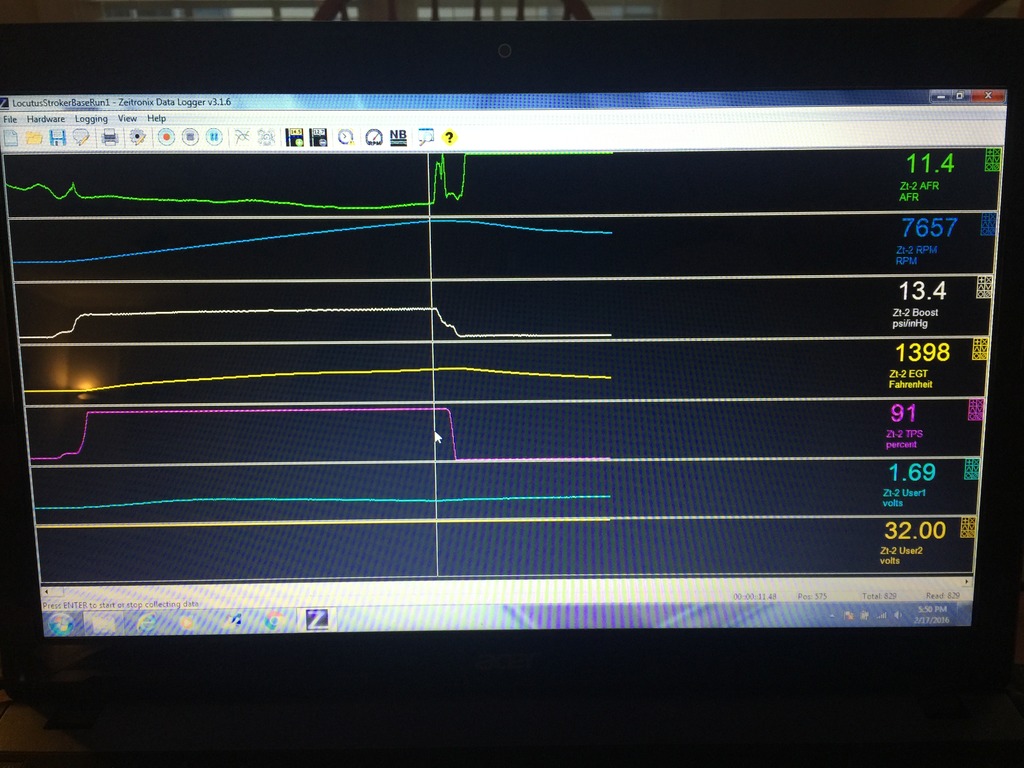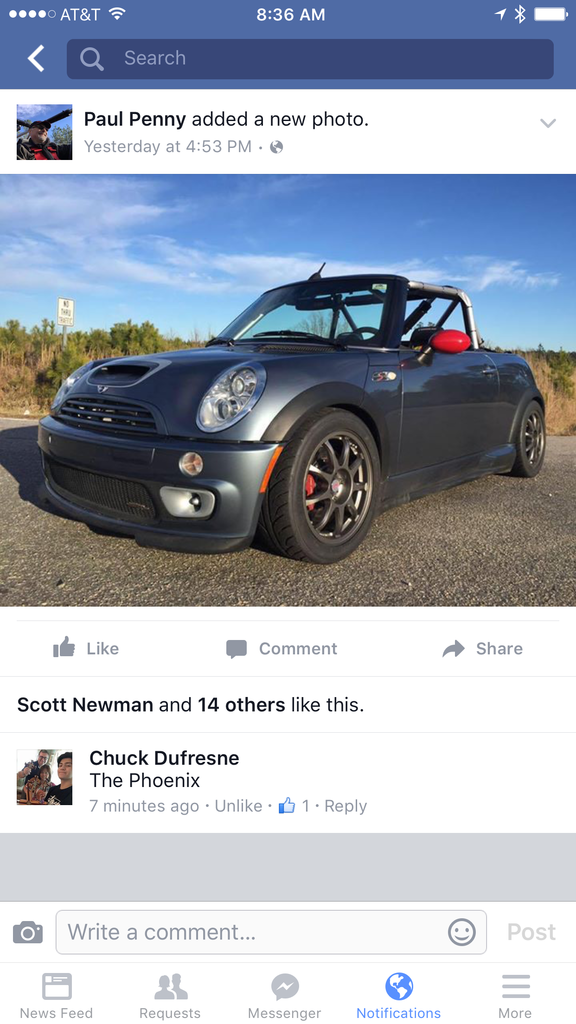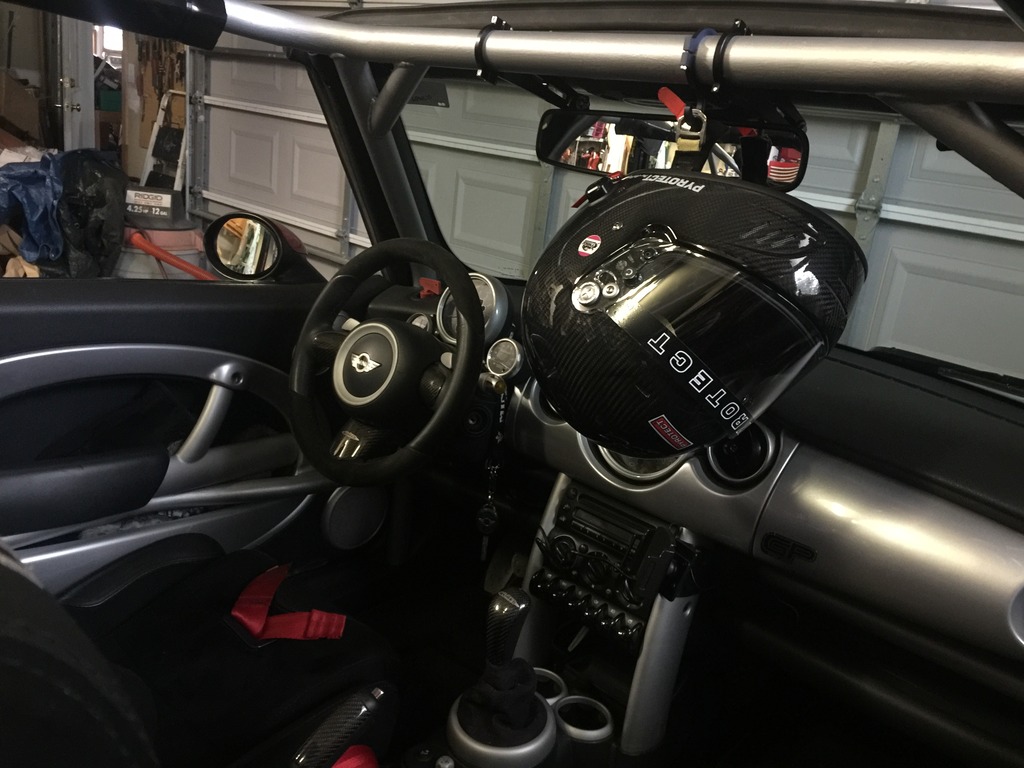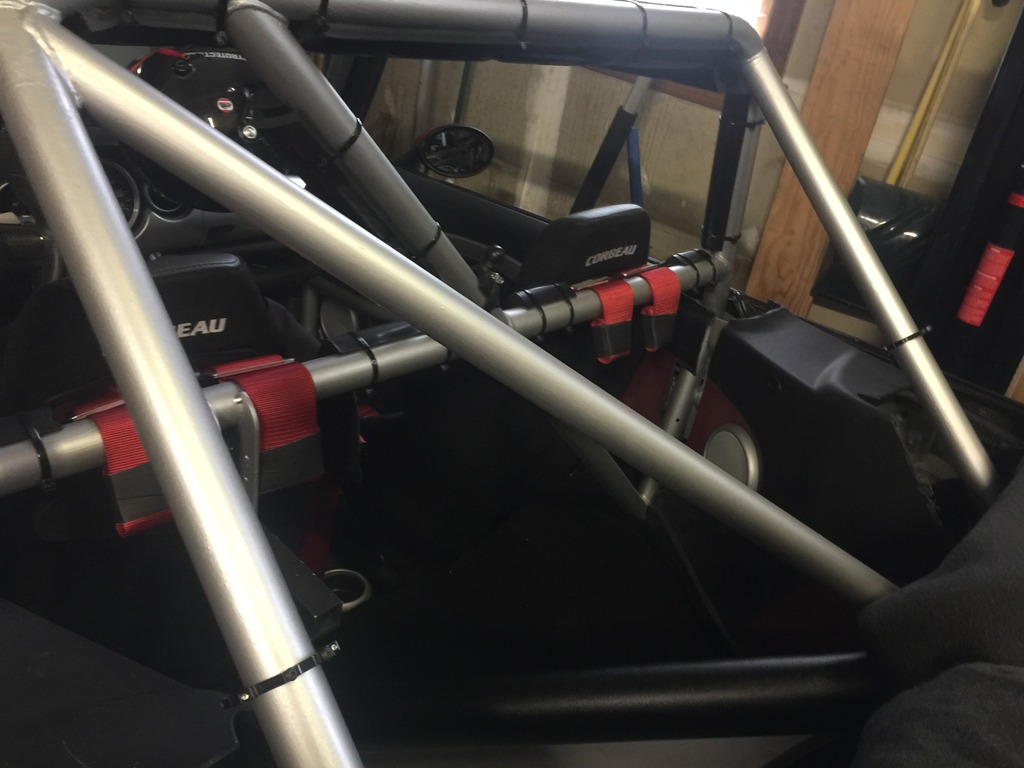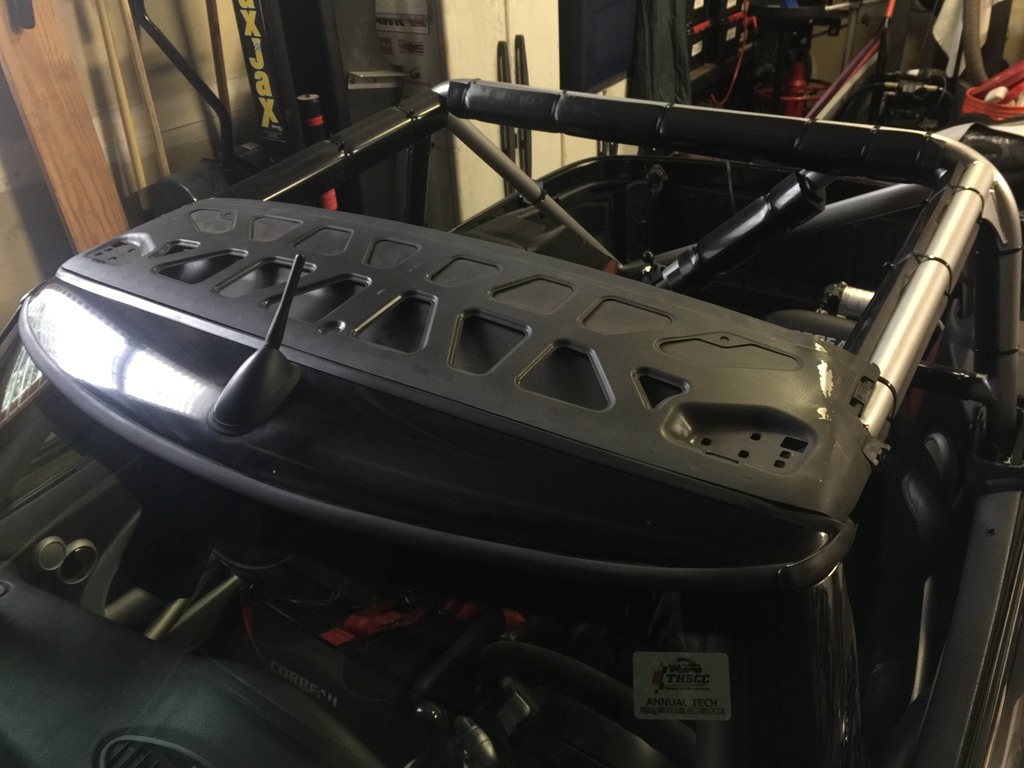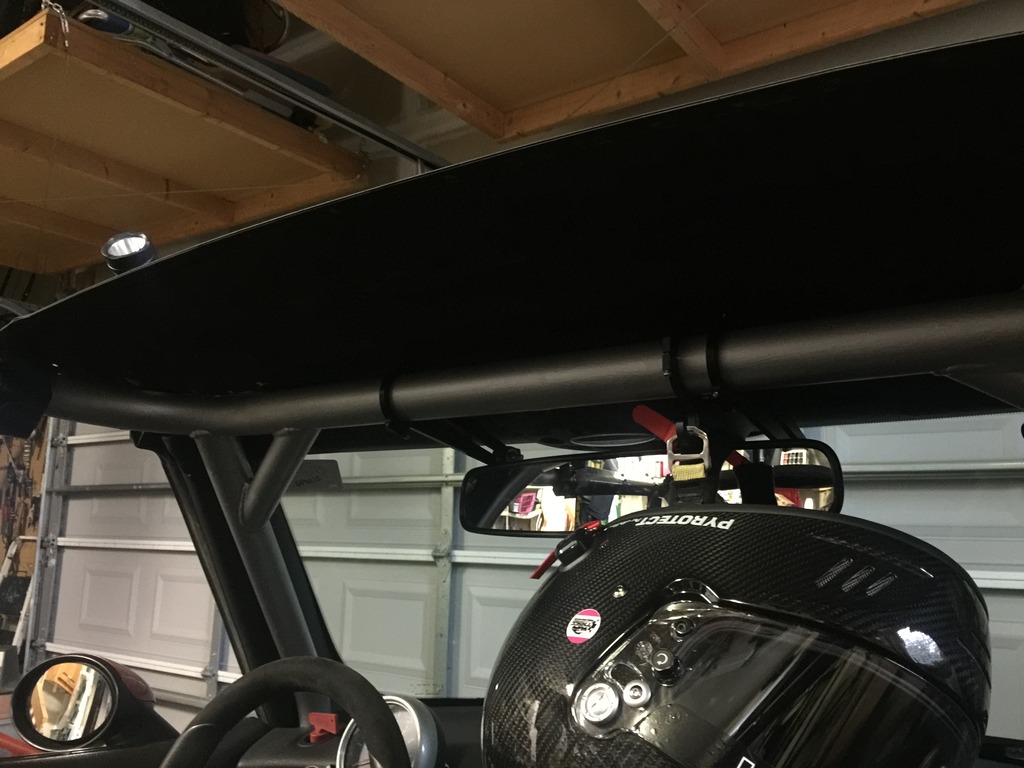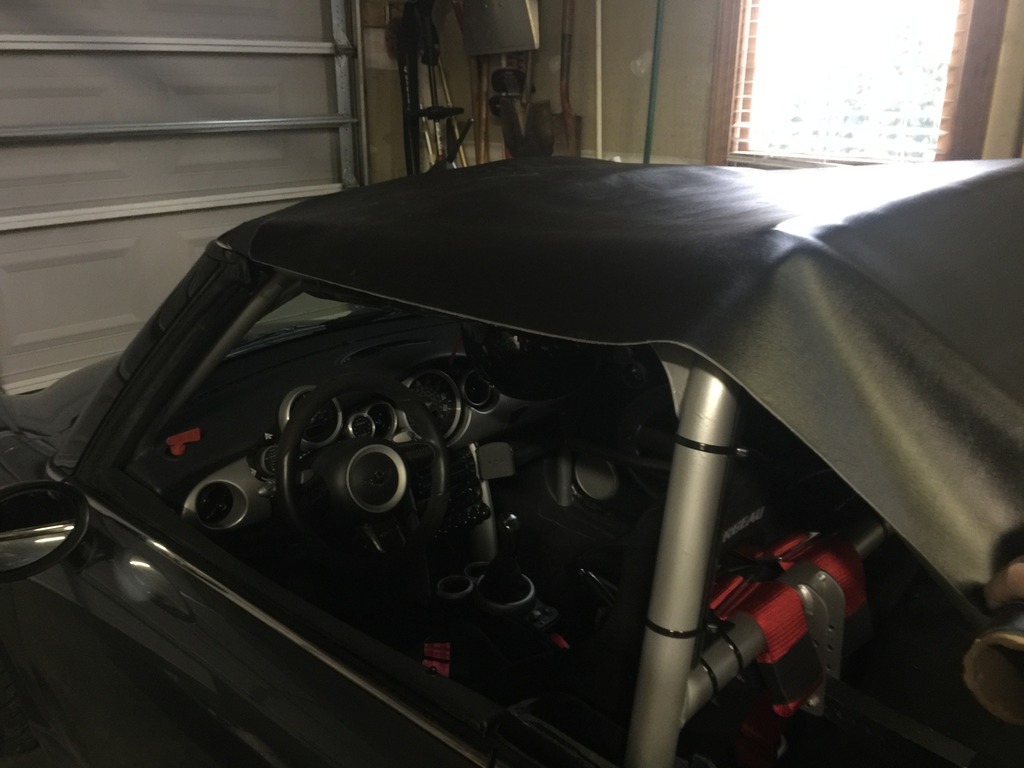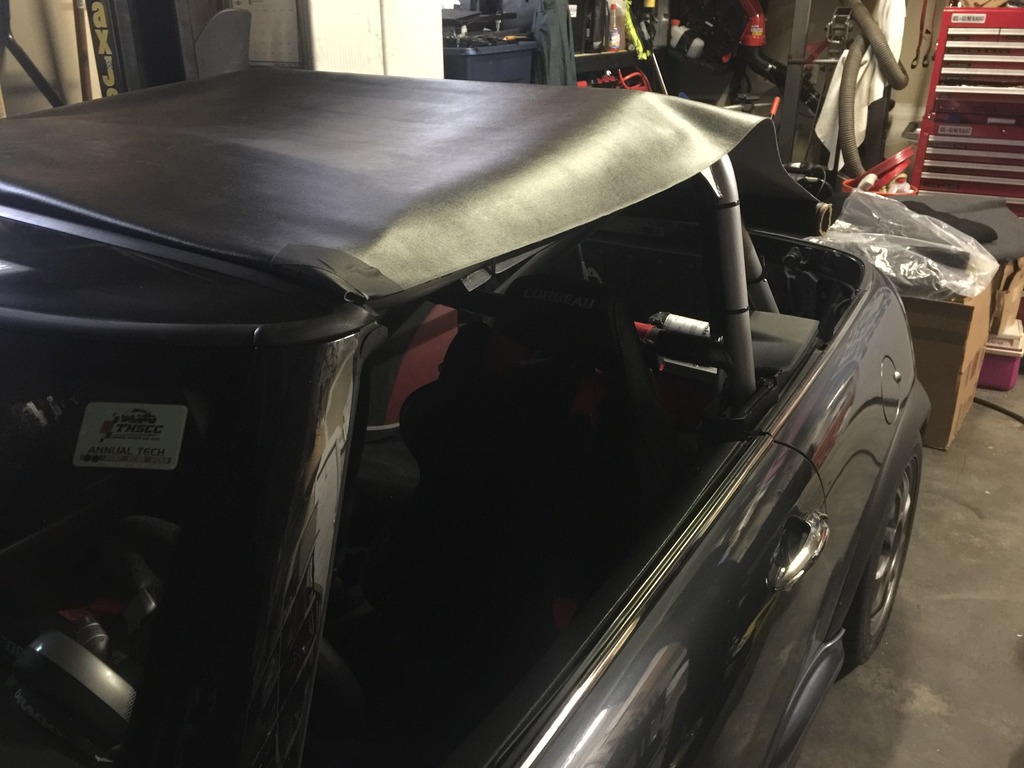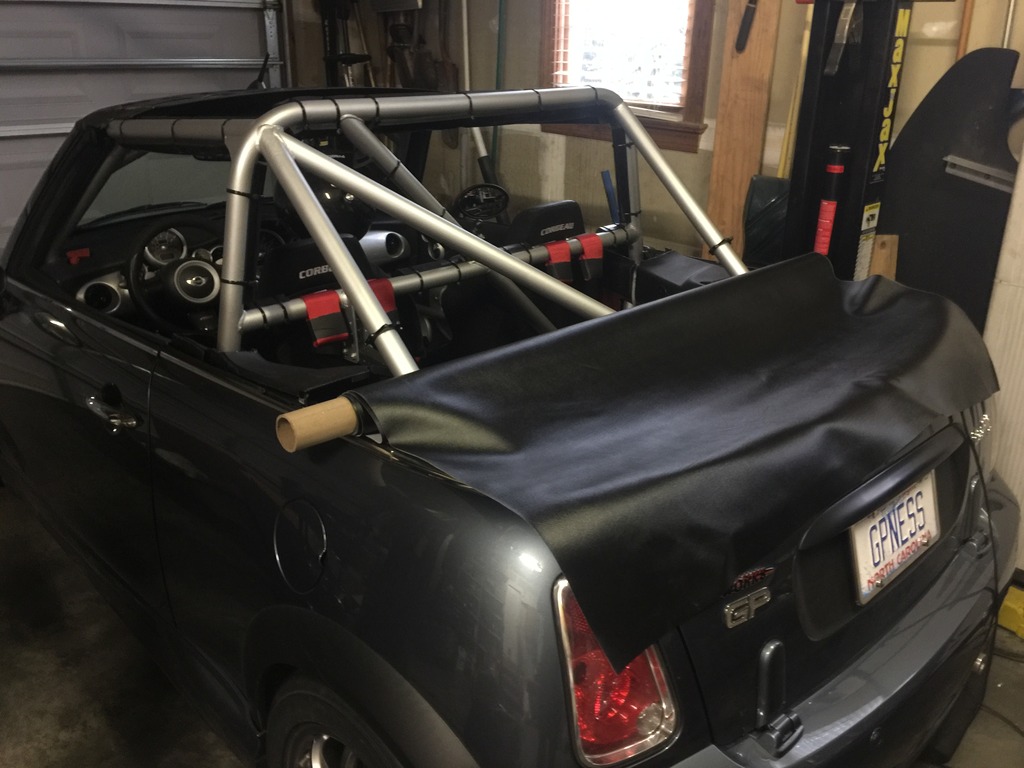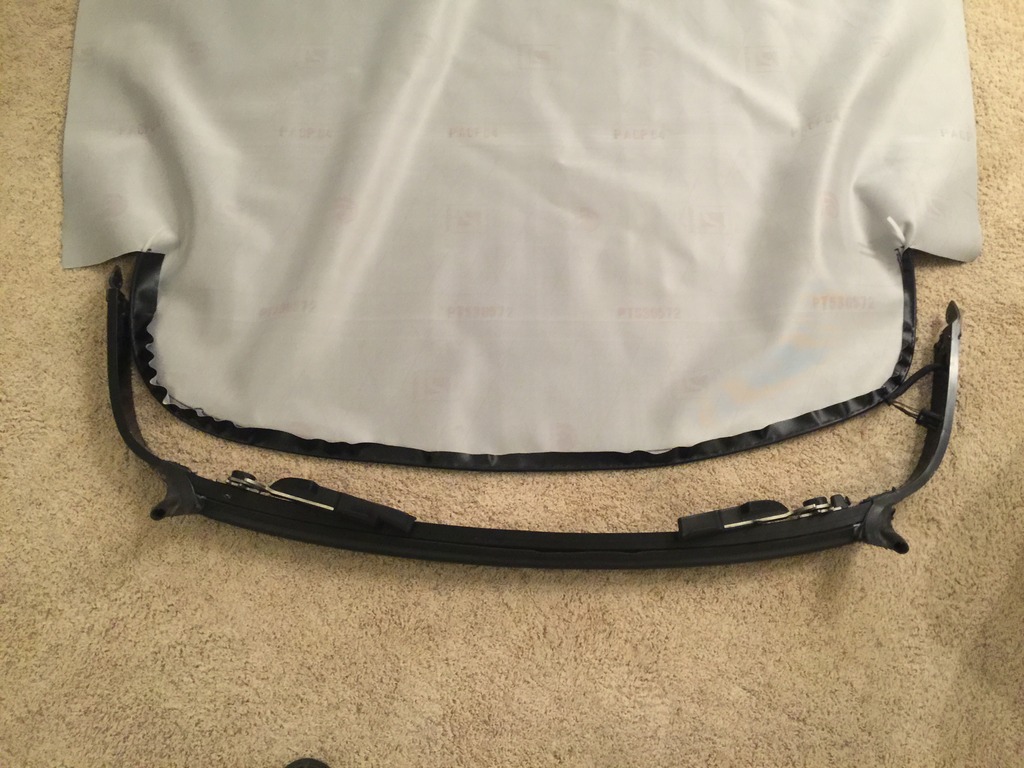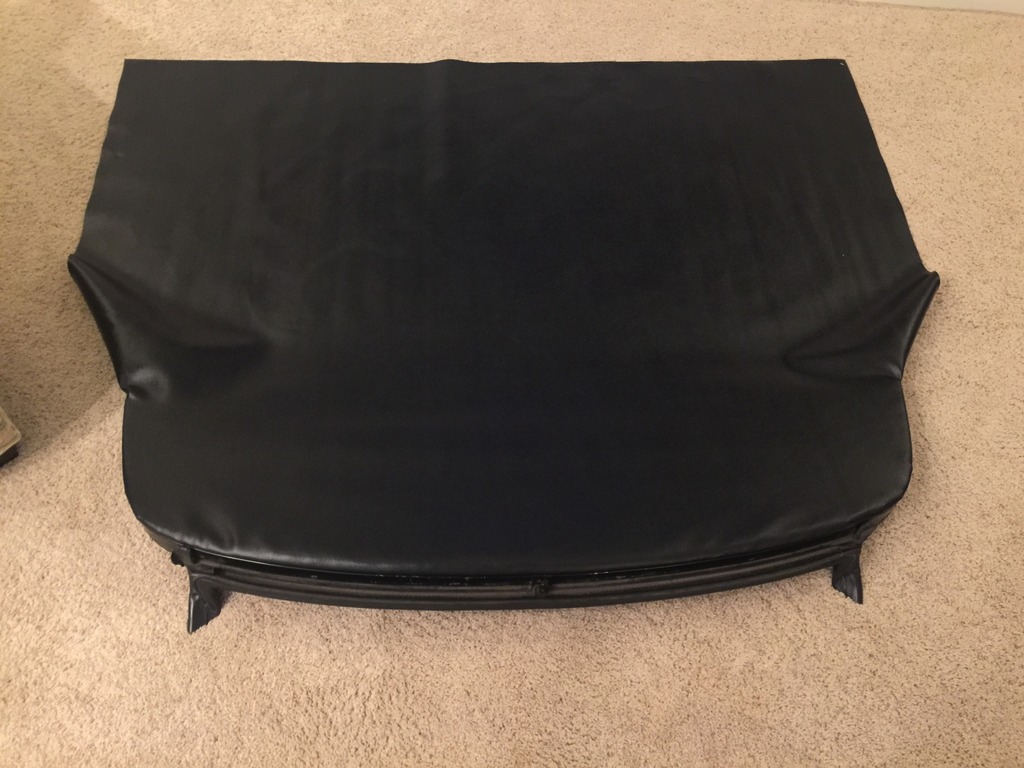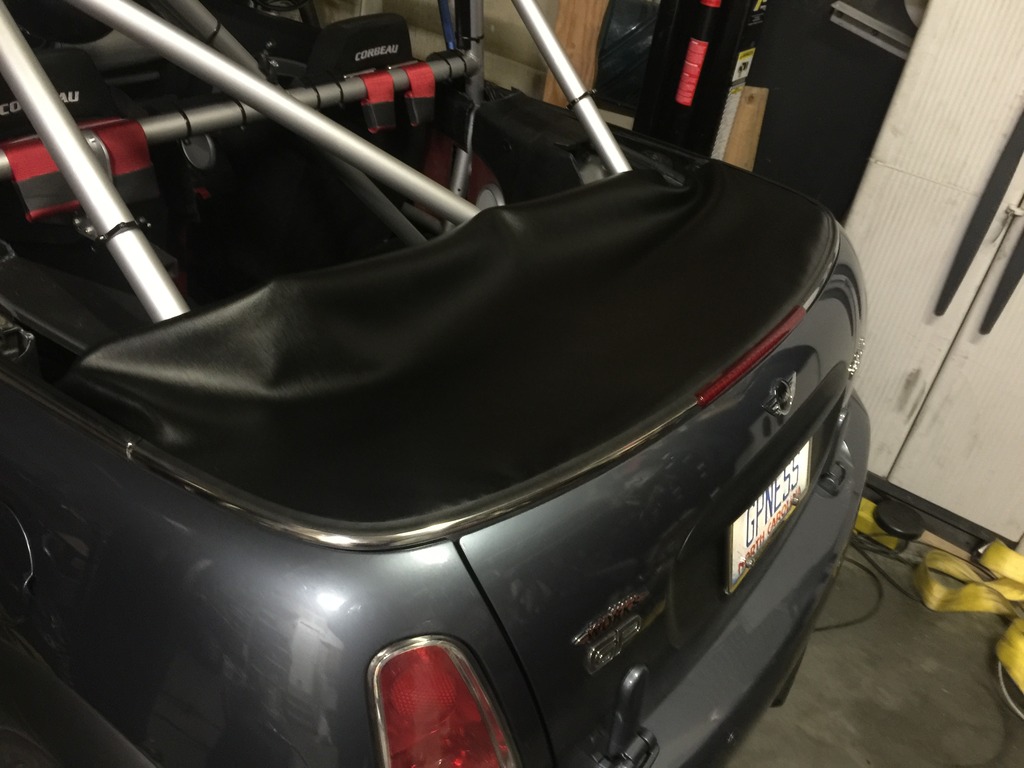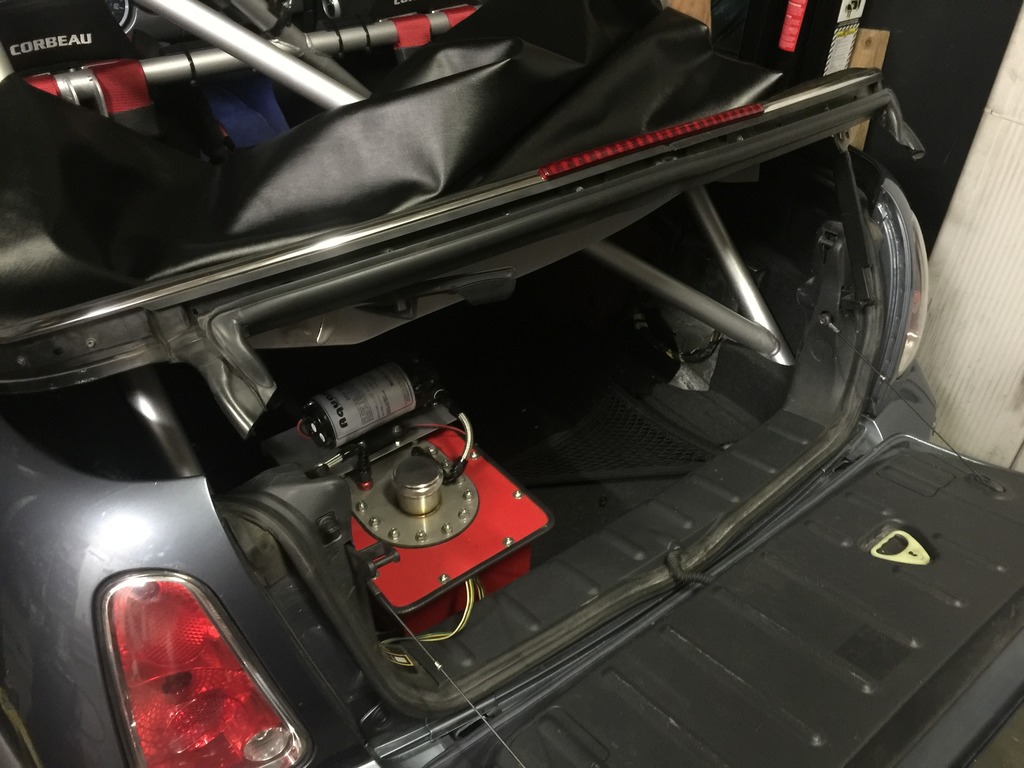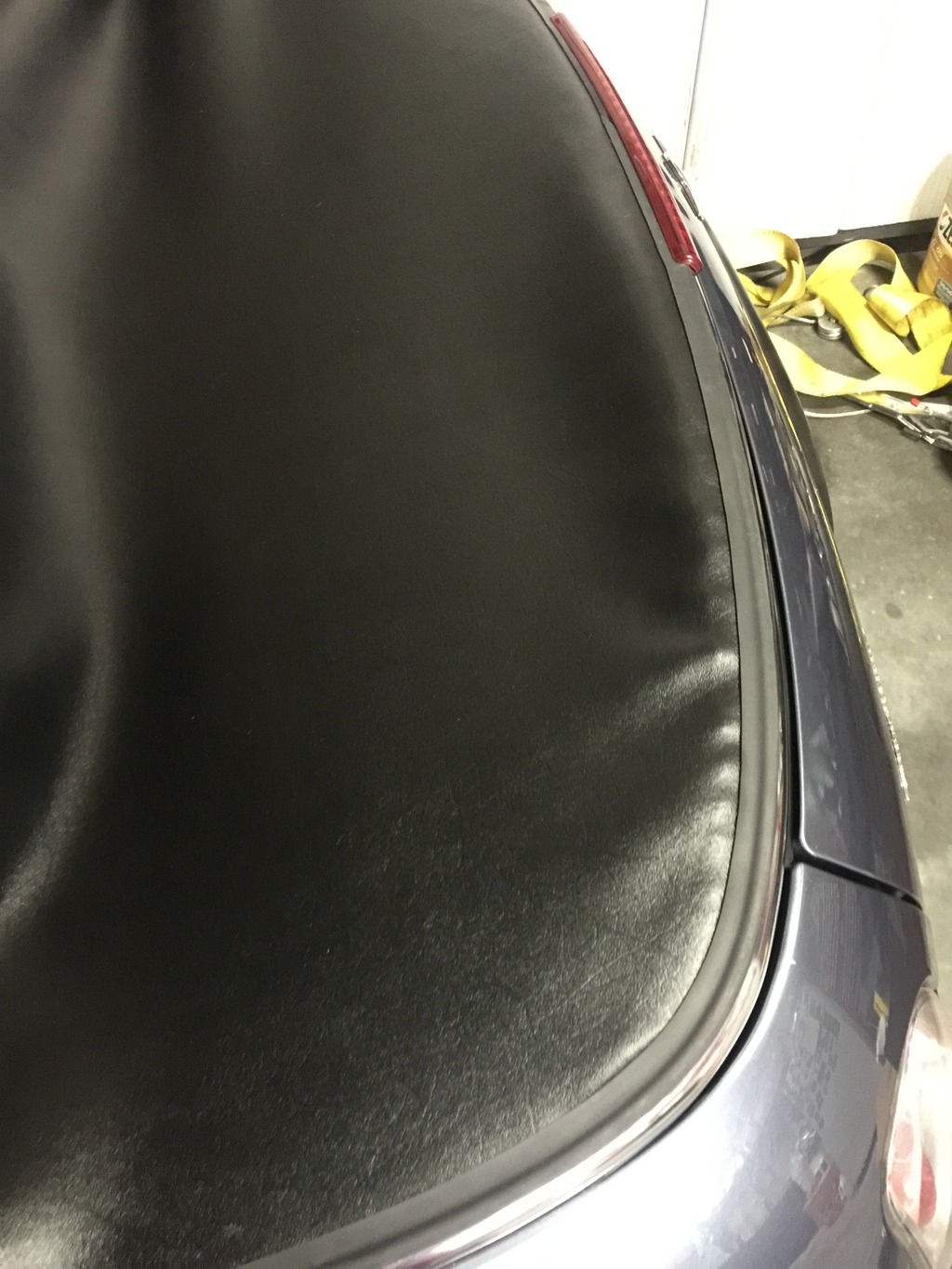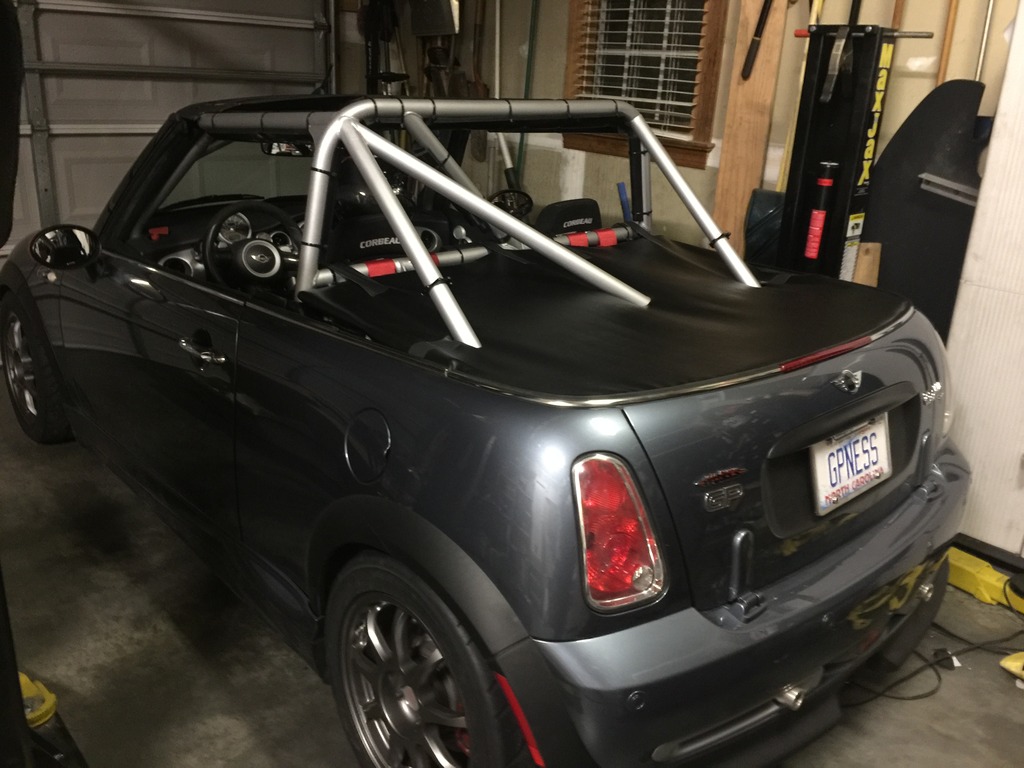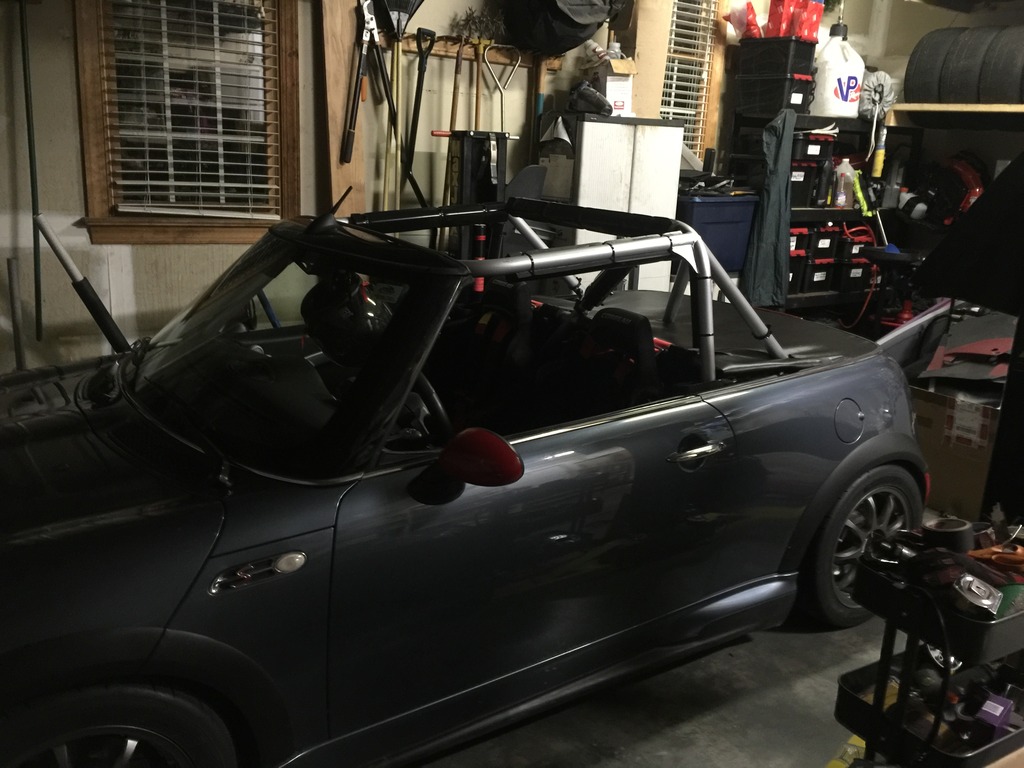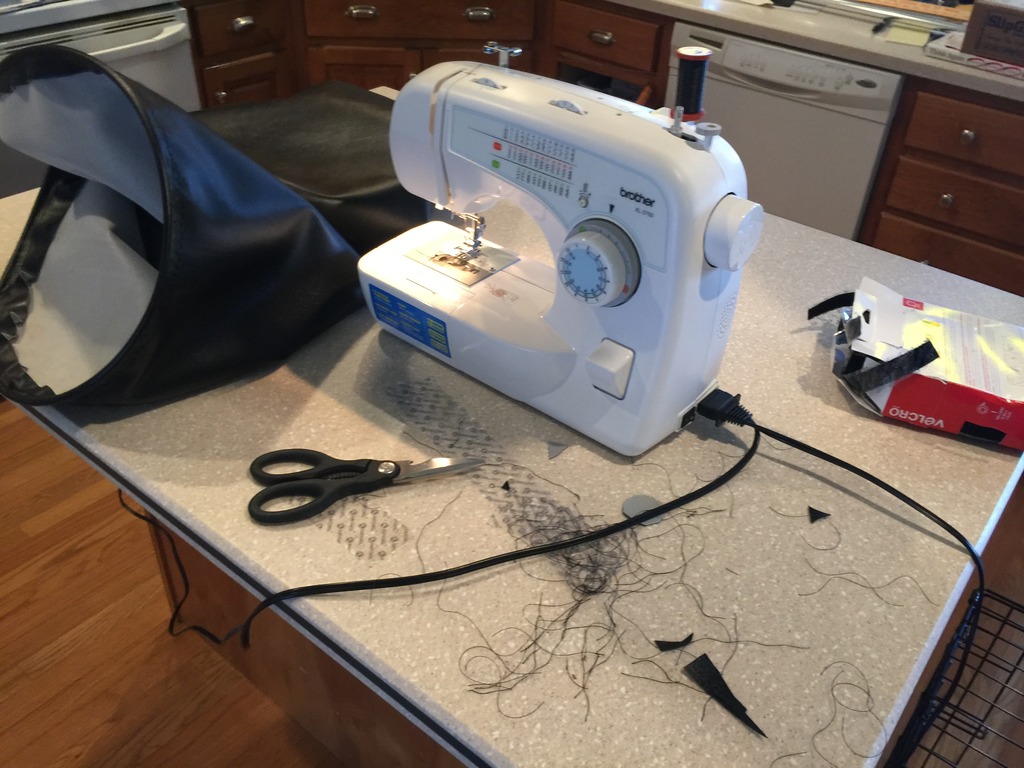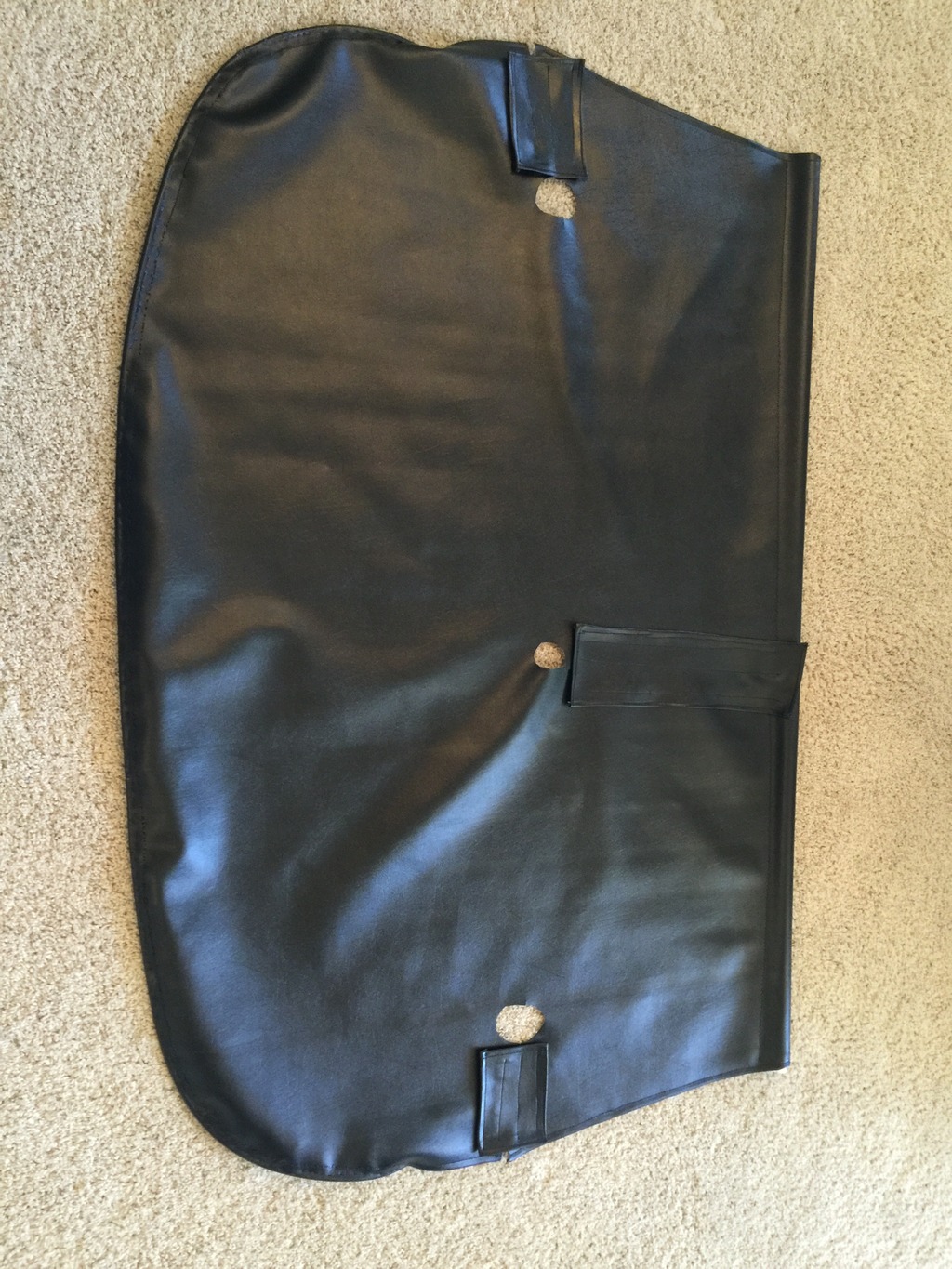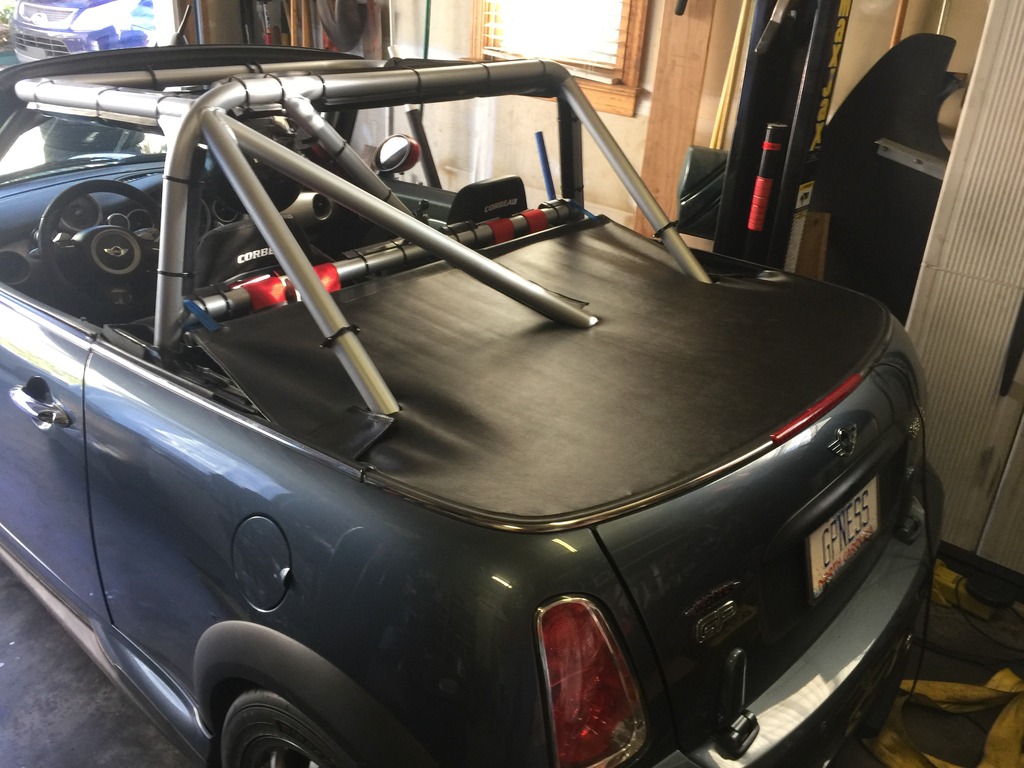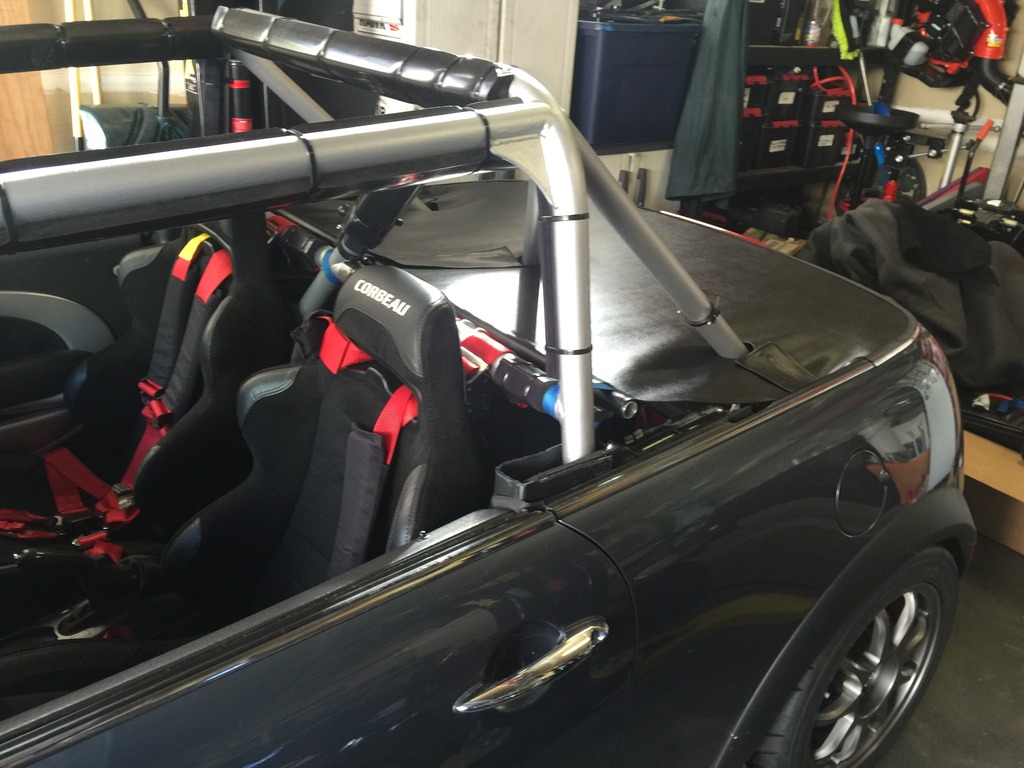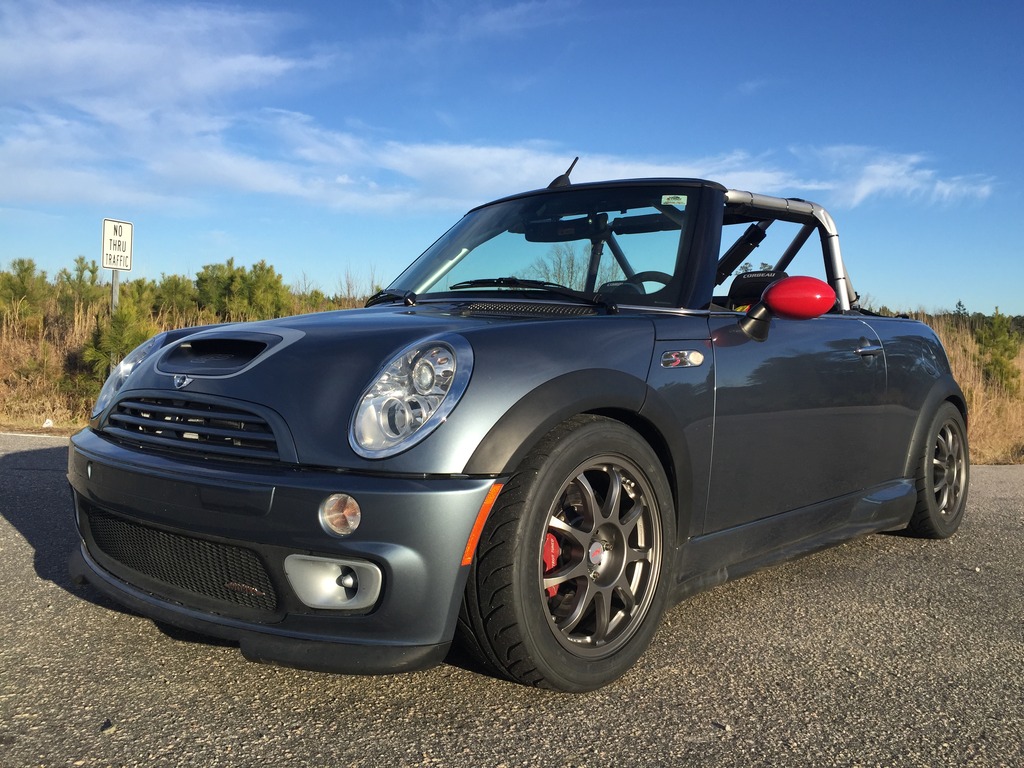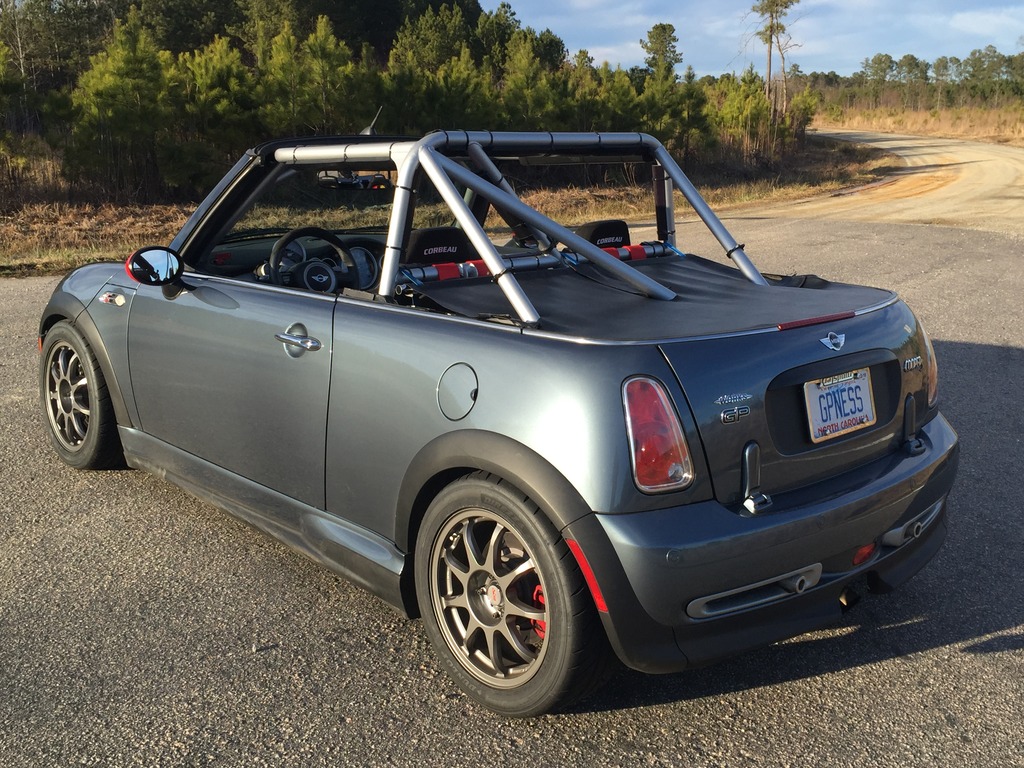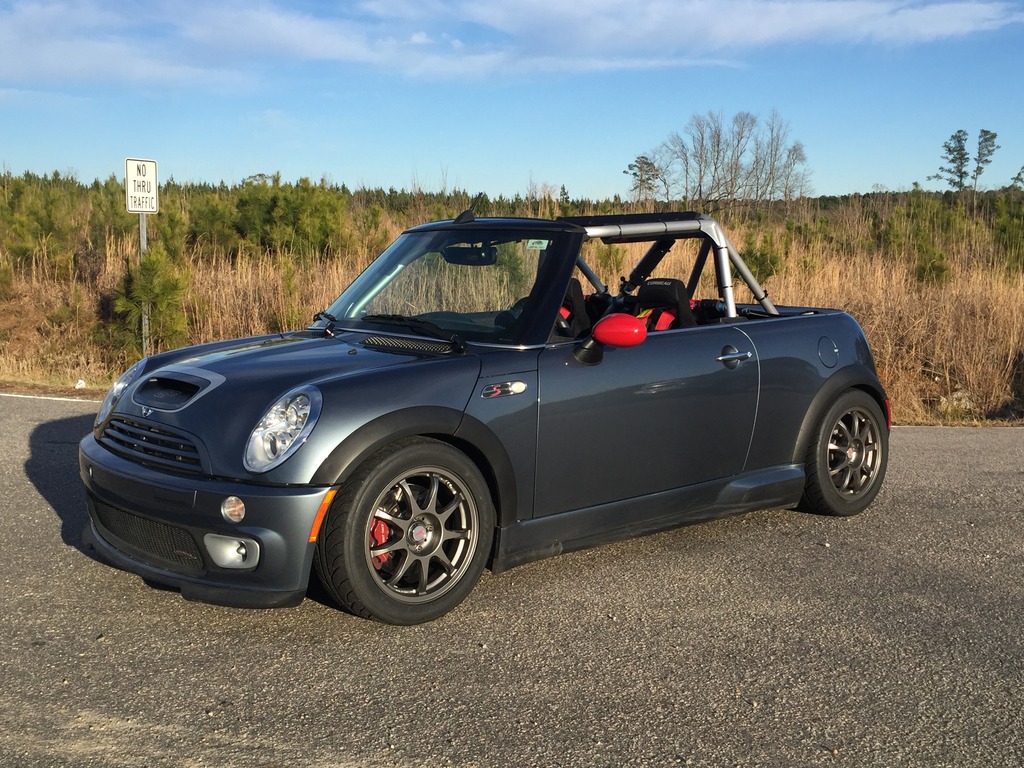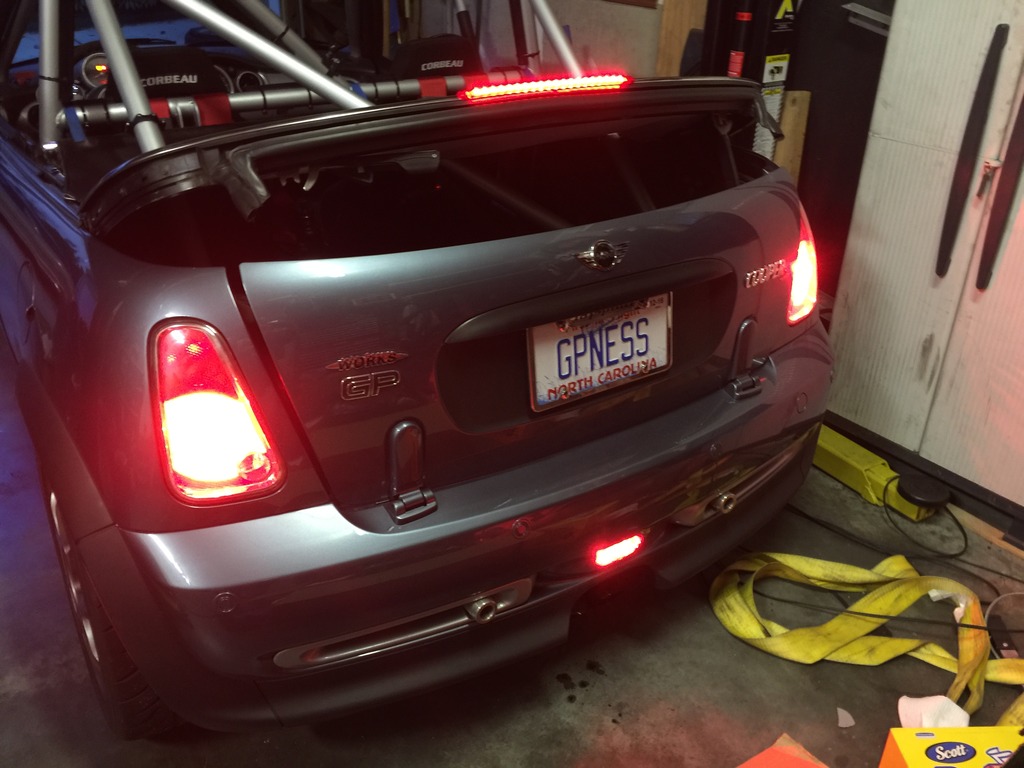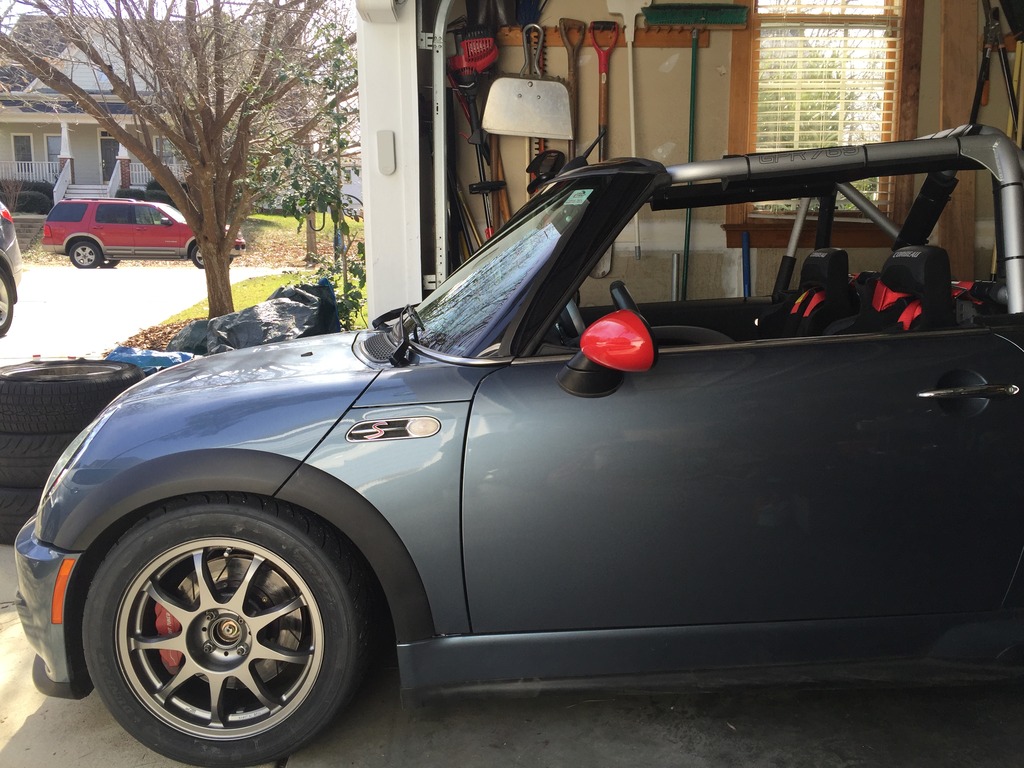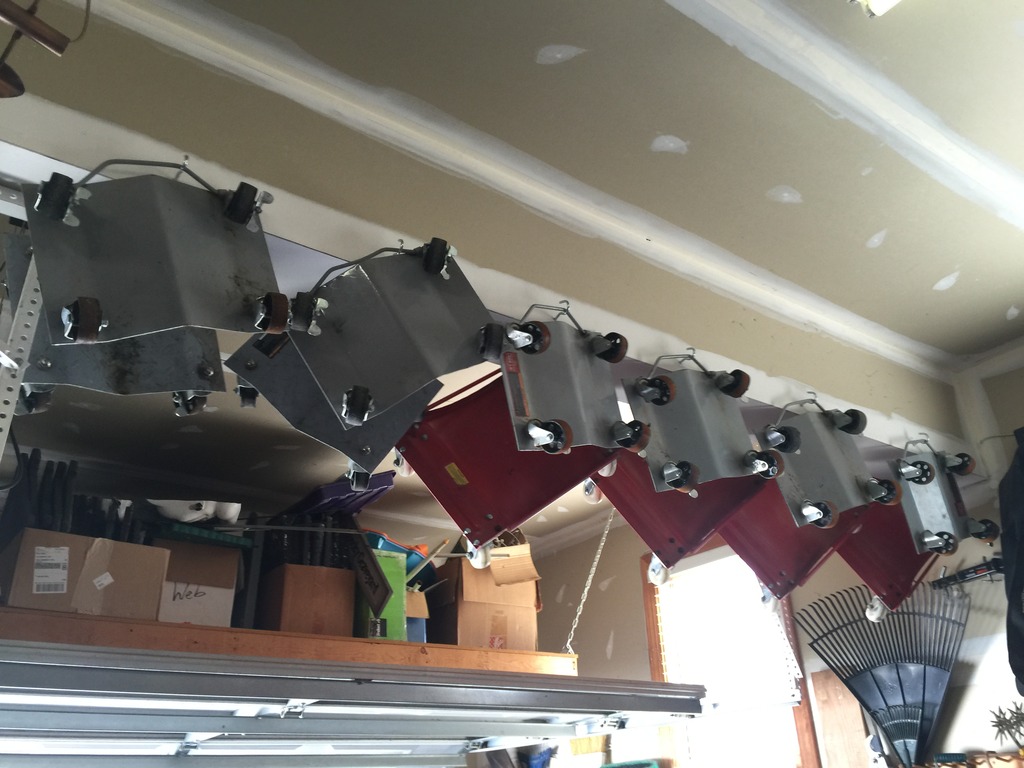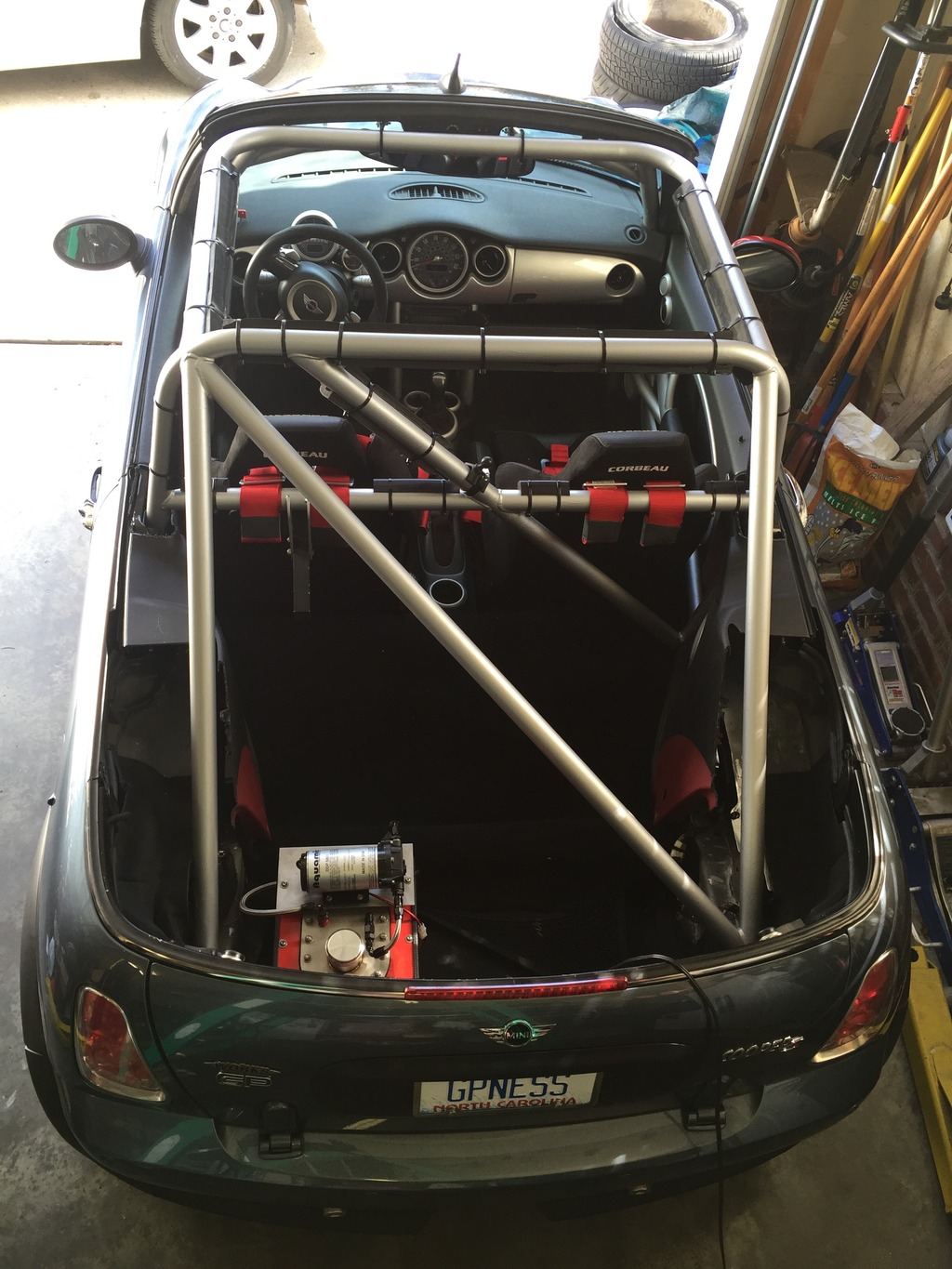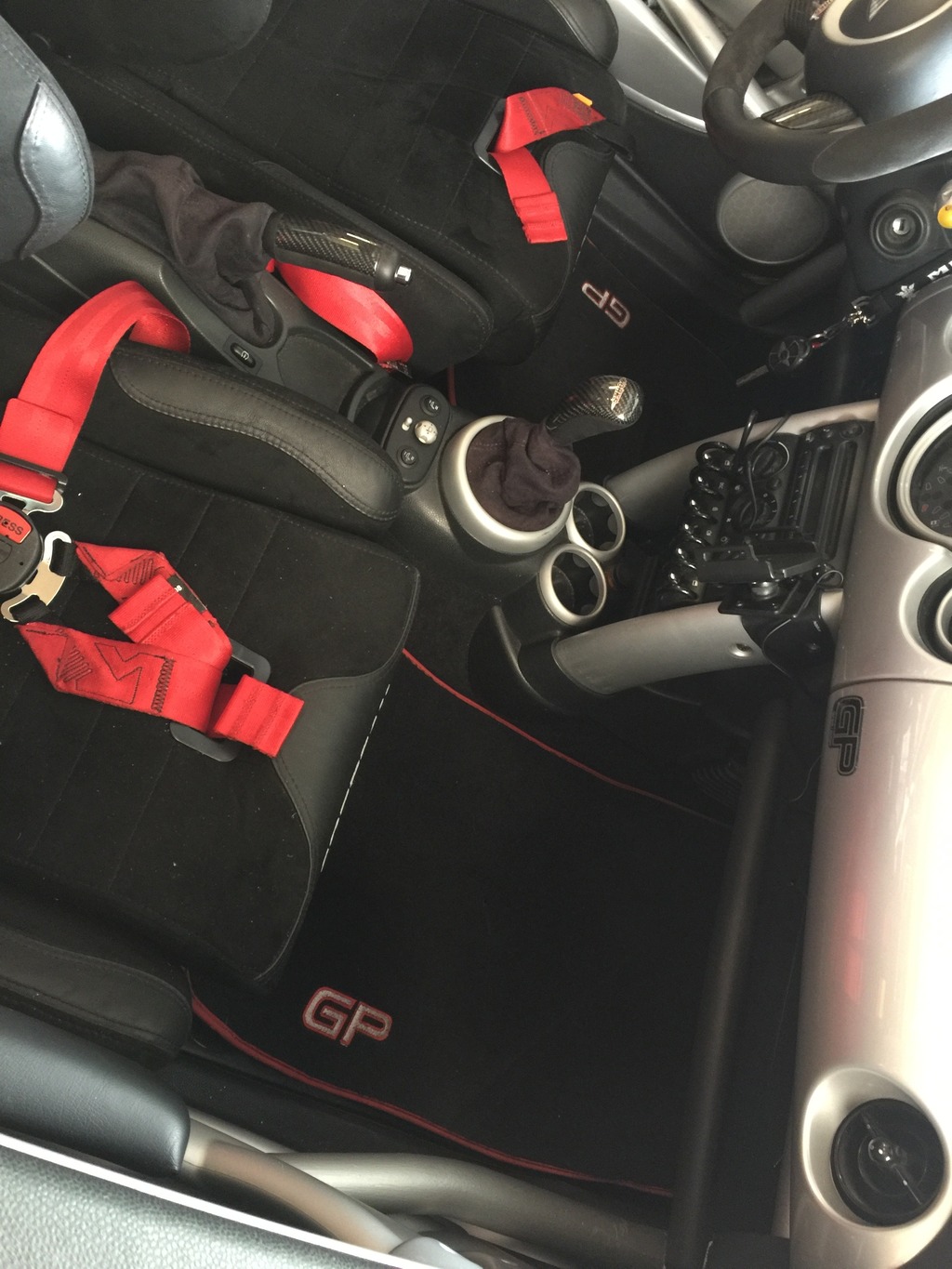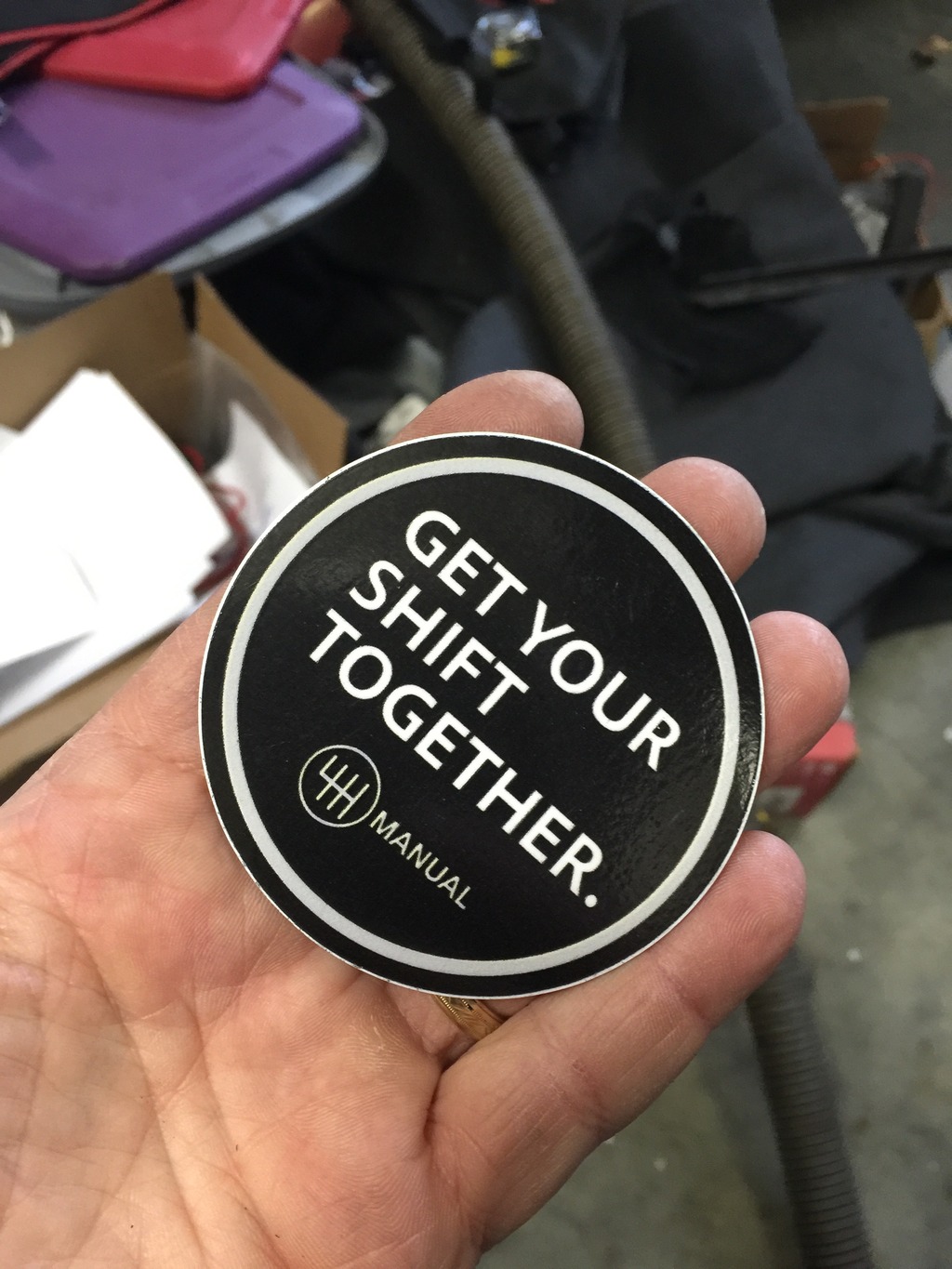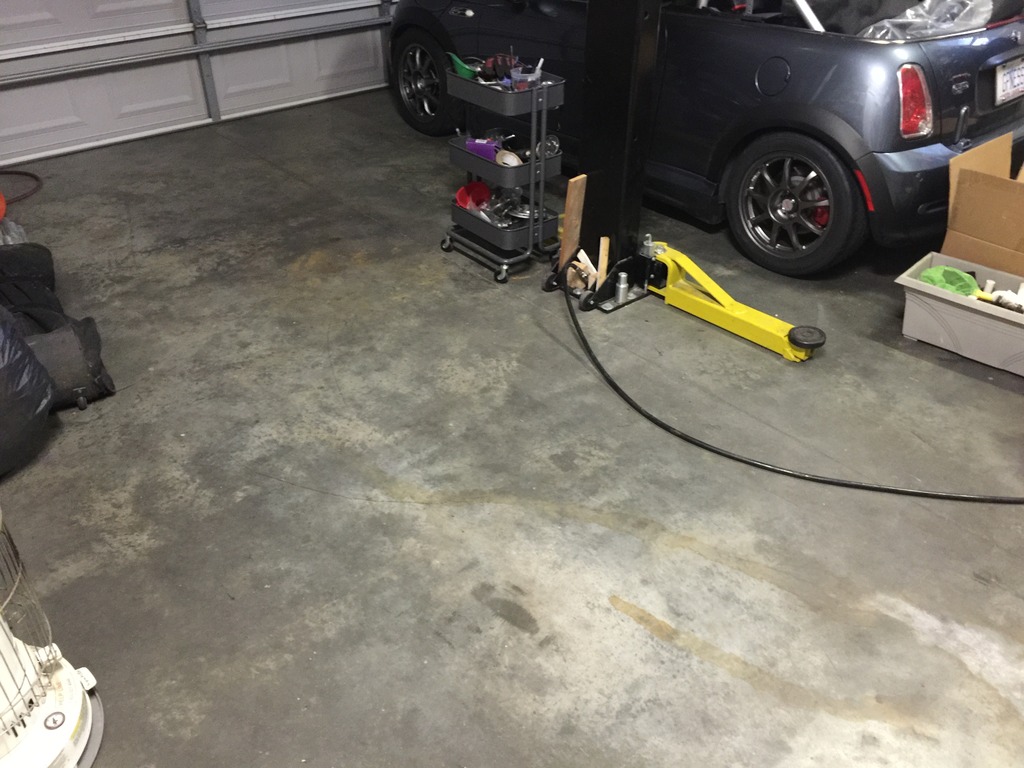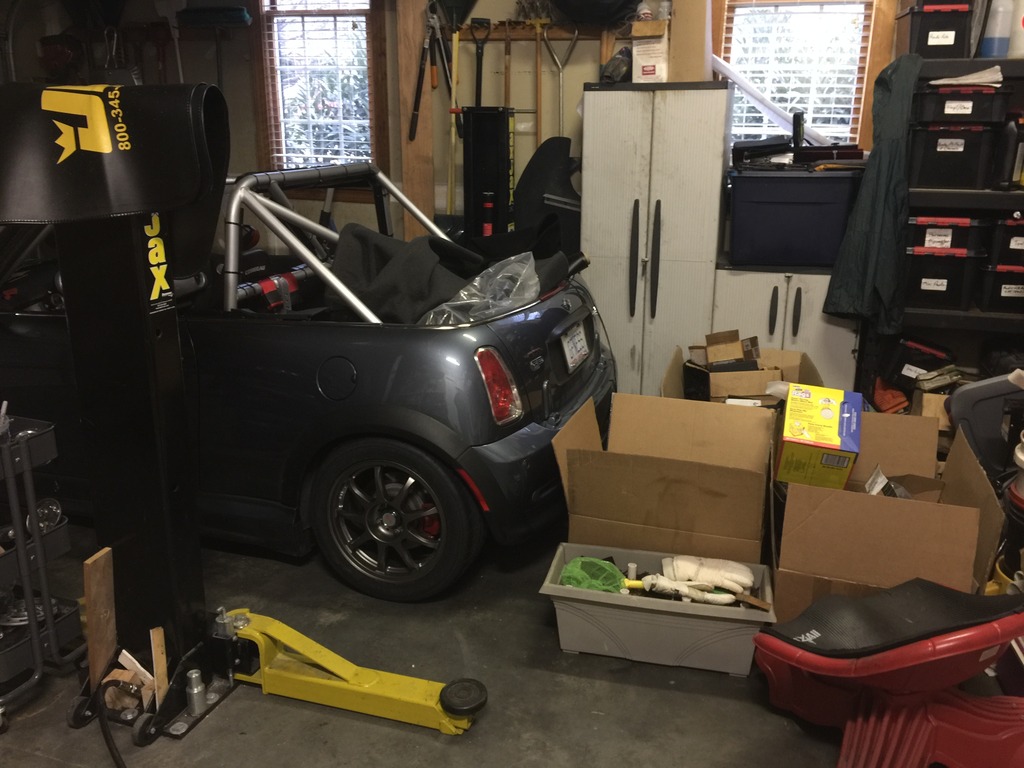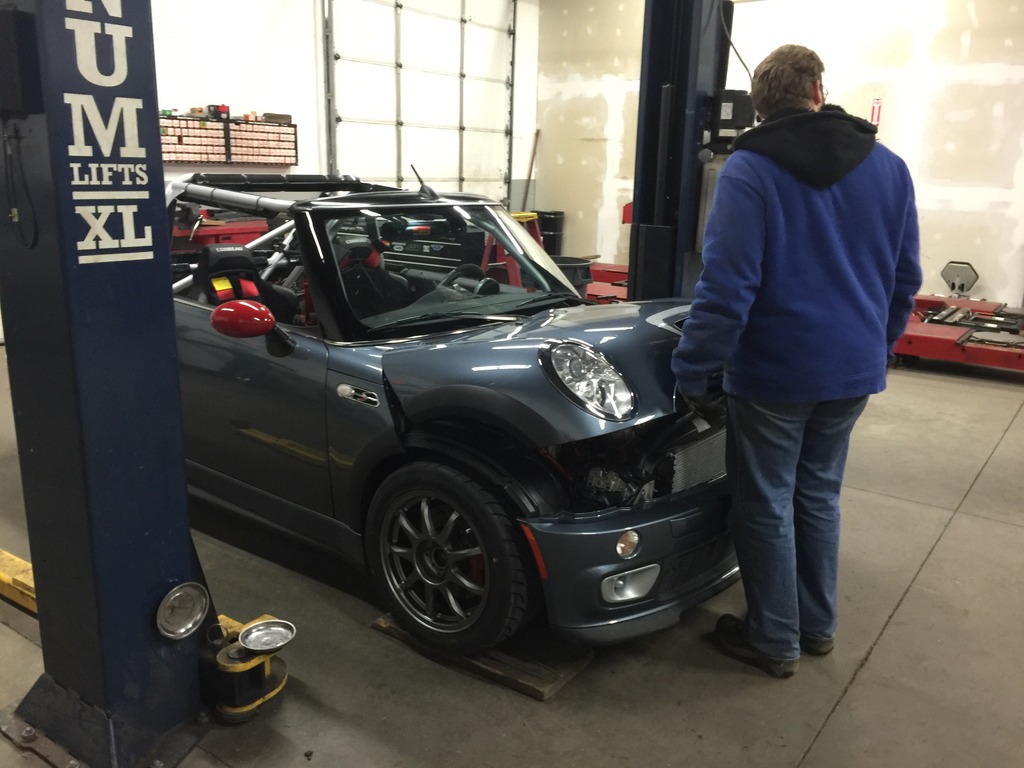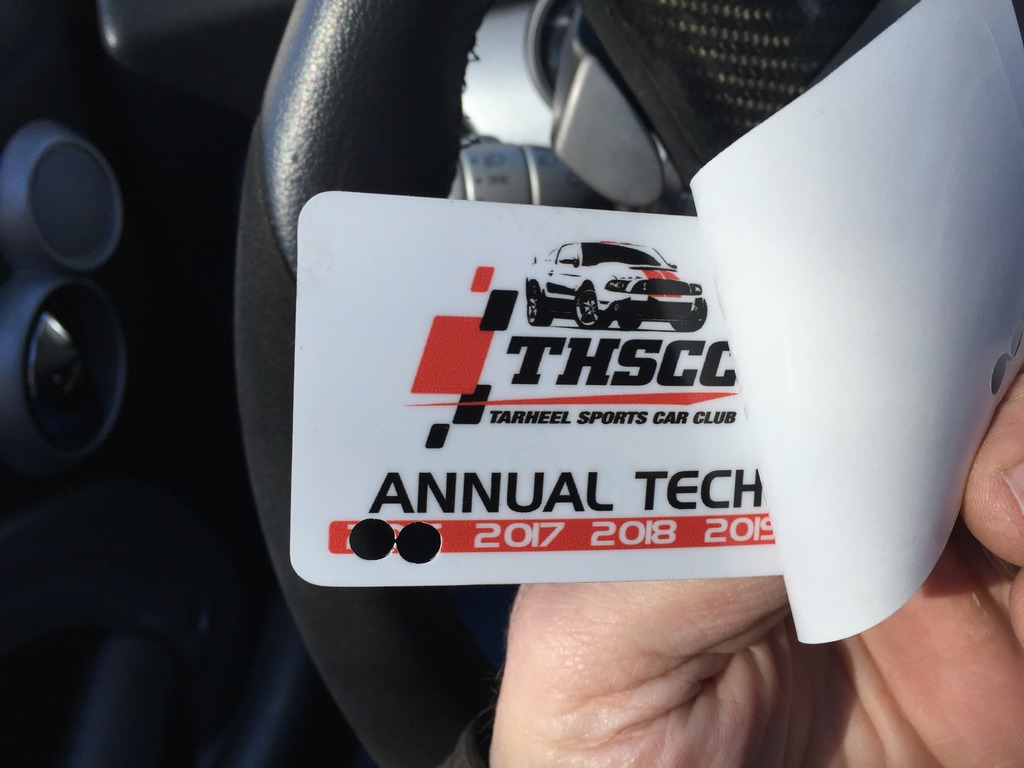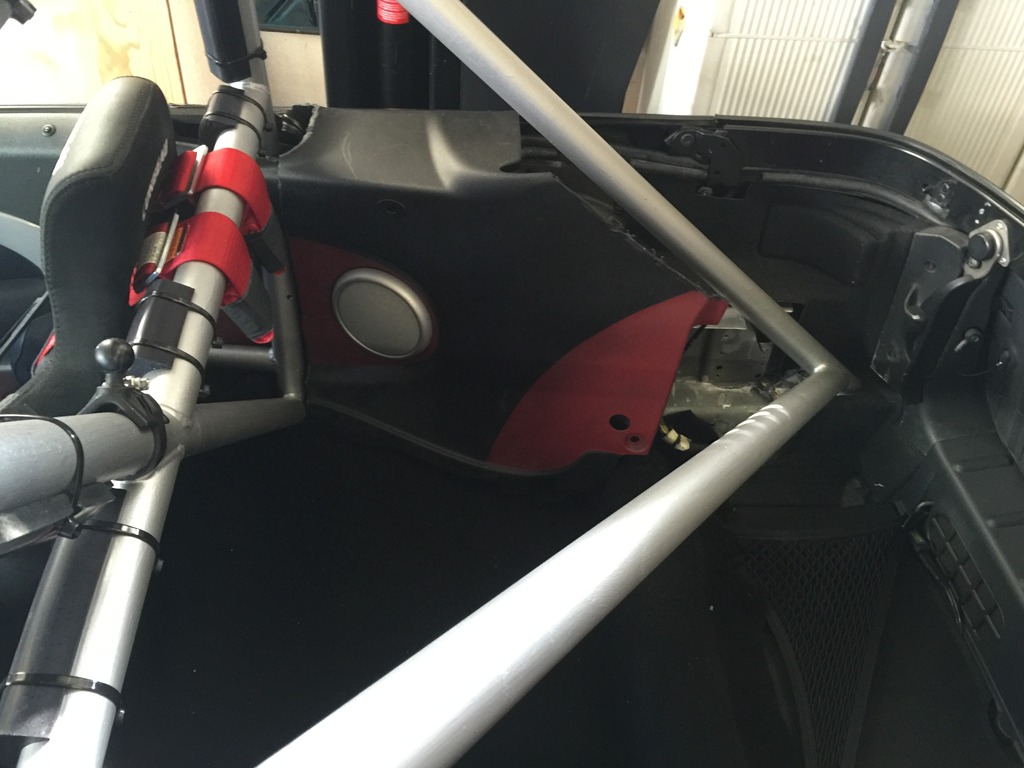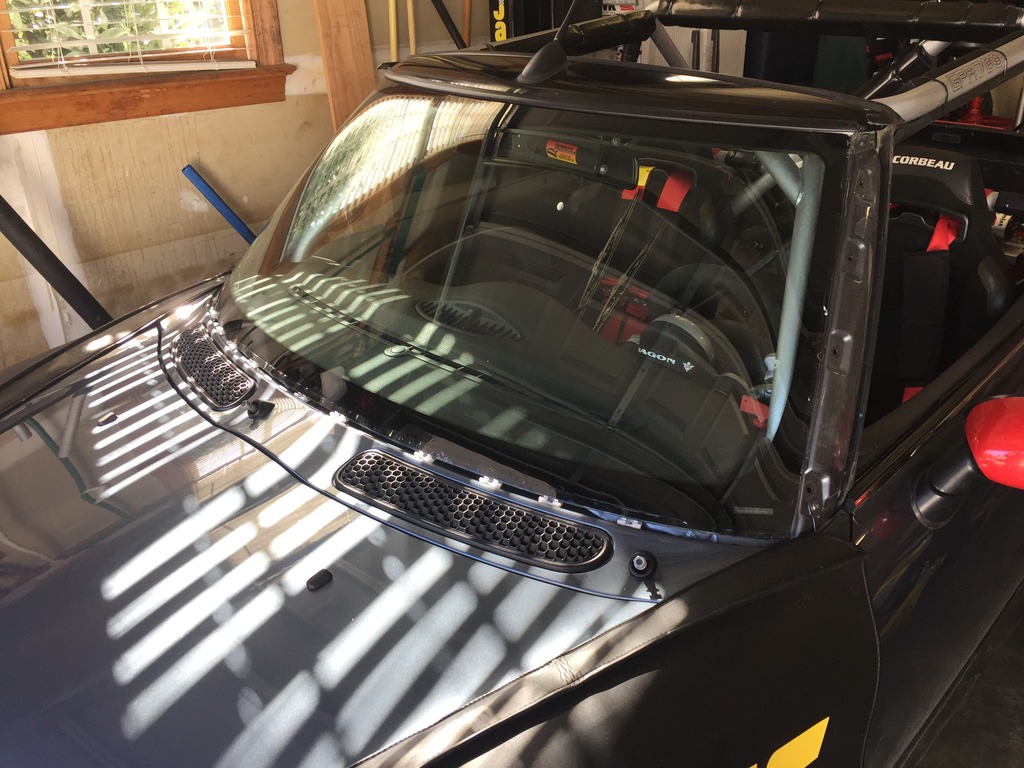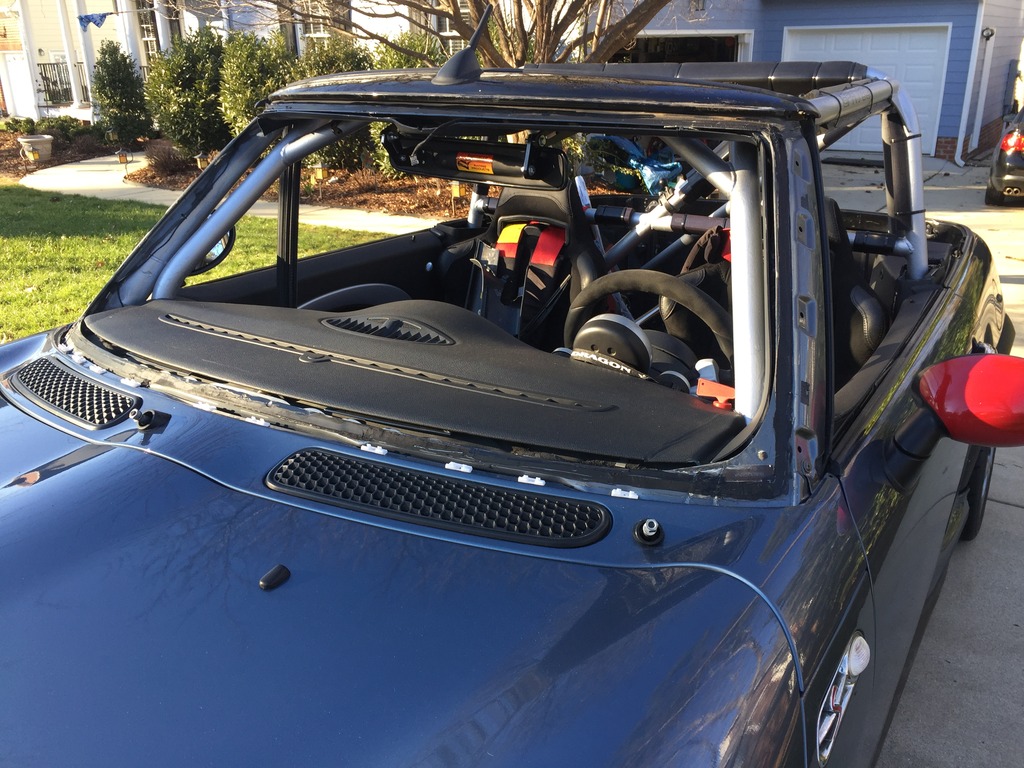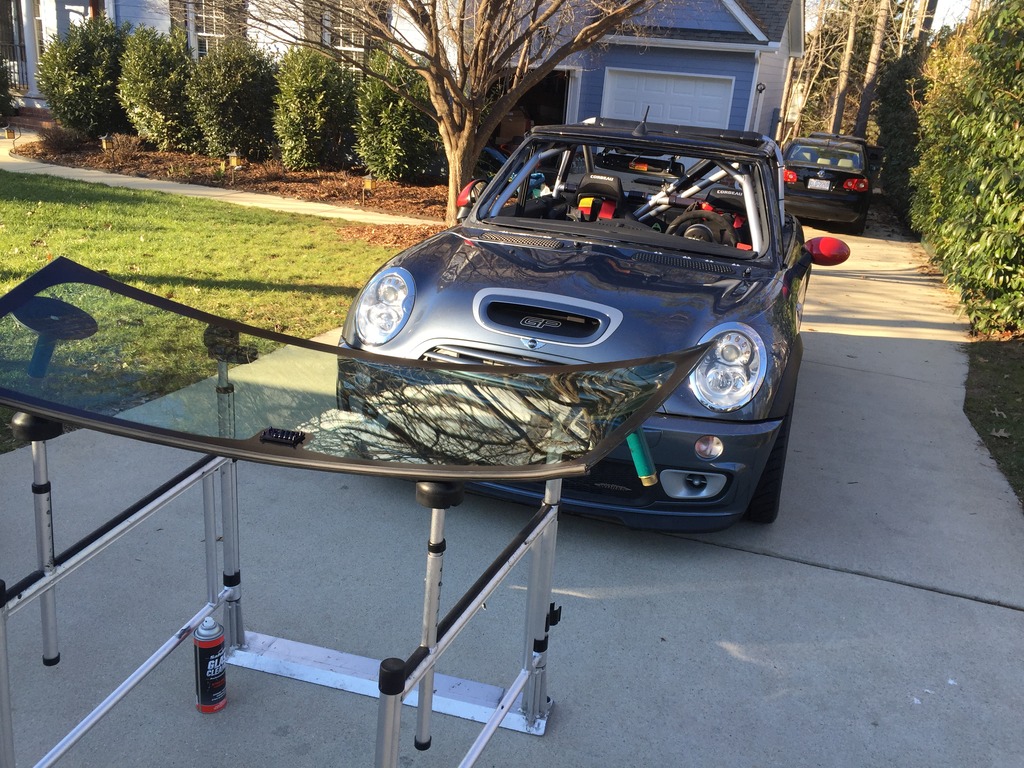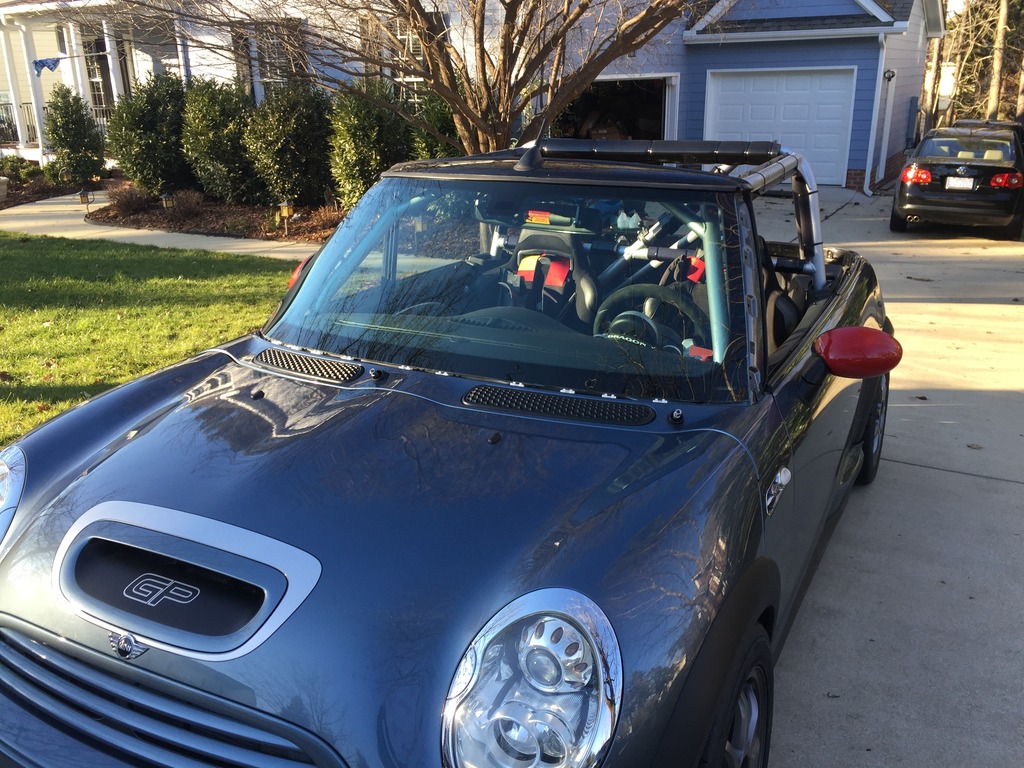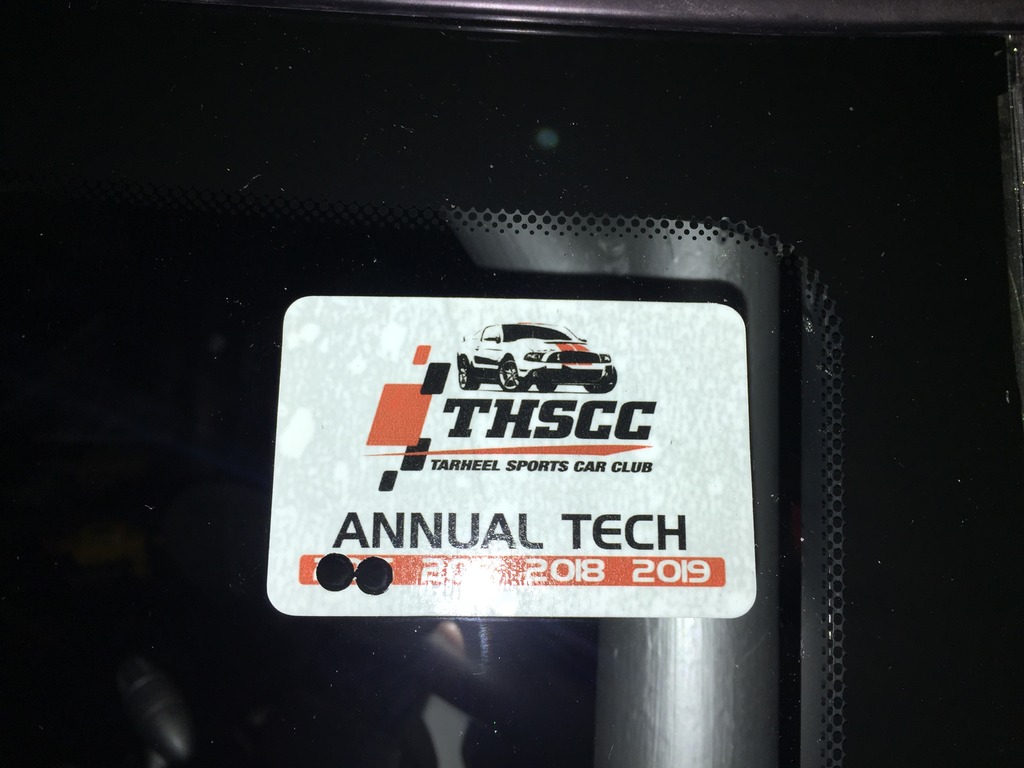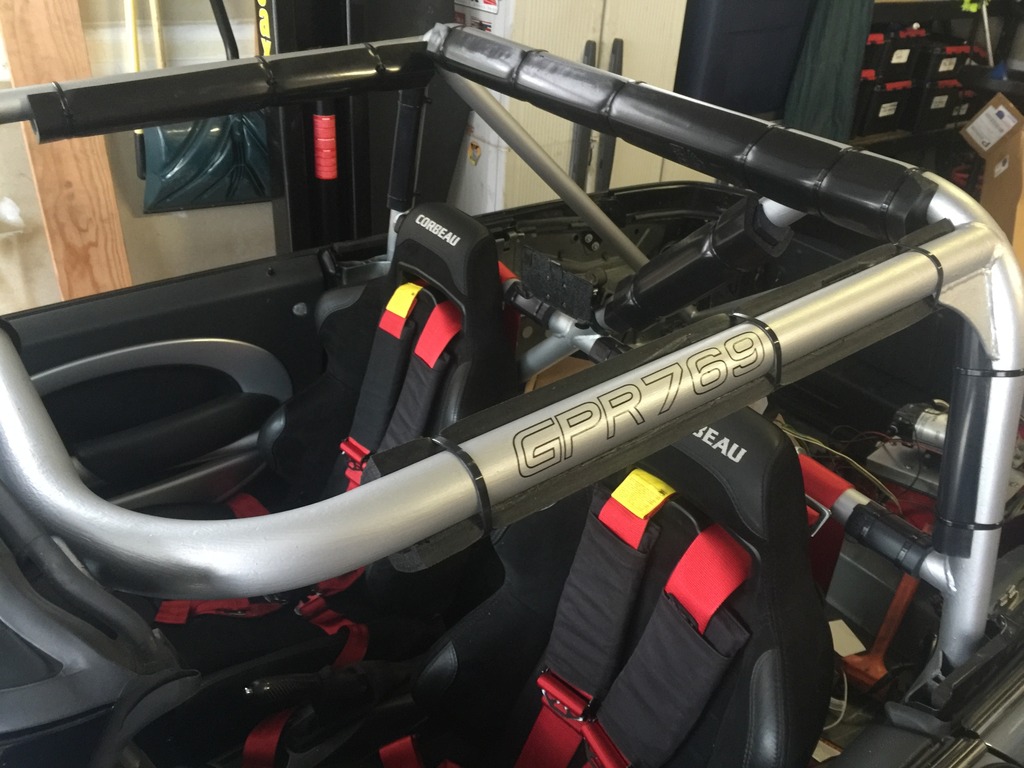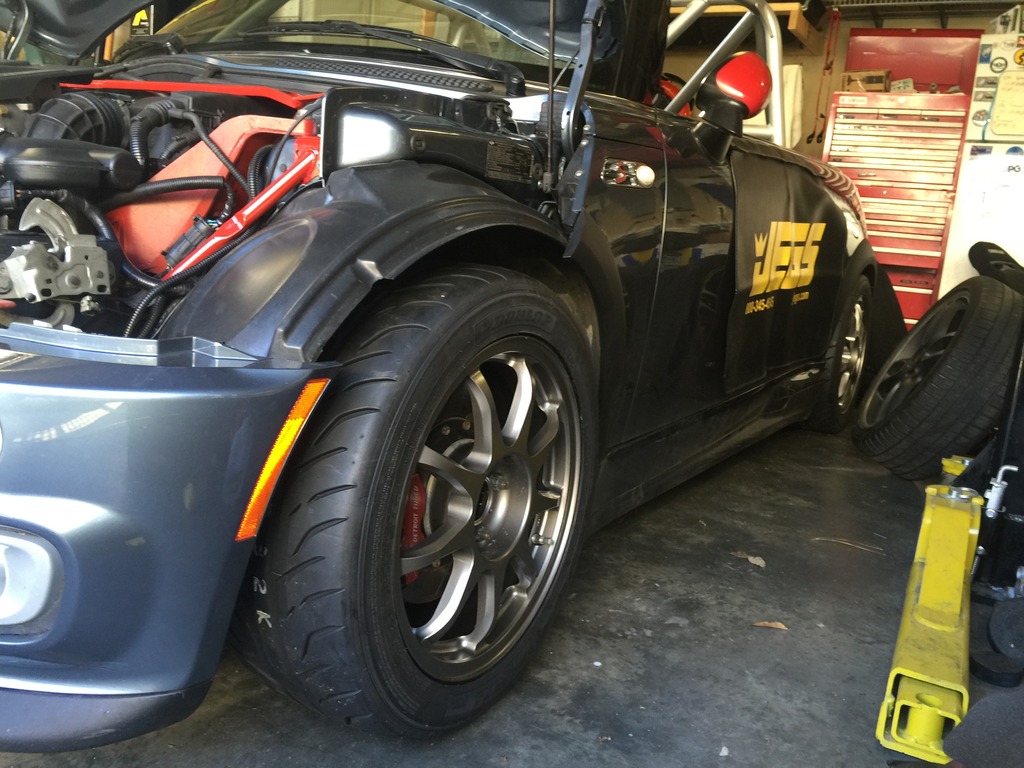Rainy week here, but should be nice at VIR this weekend. Getting ready to hit the road Friday.
First, make sure the GPness Poncho is good to go. I bought this cover from Roadster Solutions. It’s designed to fit a MINI cabrio, with top up or down. But not with NO top. I tested it previously, and it just needed something (“garters”) to hold it in place on the “hips” of the car. The Roadster Solutions folks sold me a few extra hold down straps with bendable padded hooks, and I sewed two of them on yesterday. Works perfectly.
Getting the track trailer packed and ready to roll. Stickers are important.
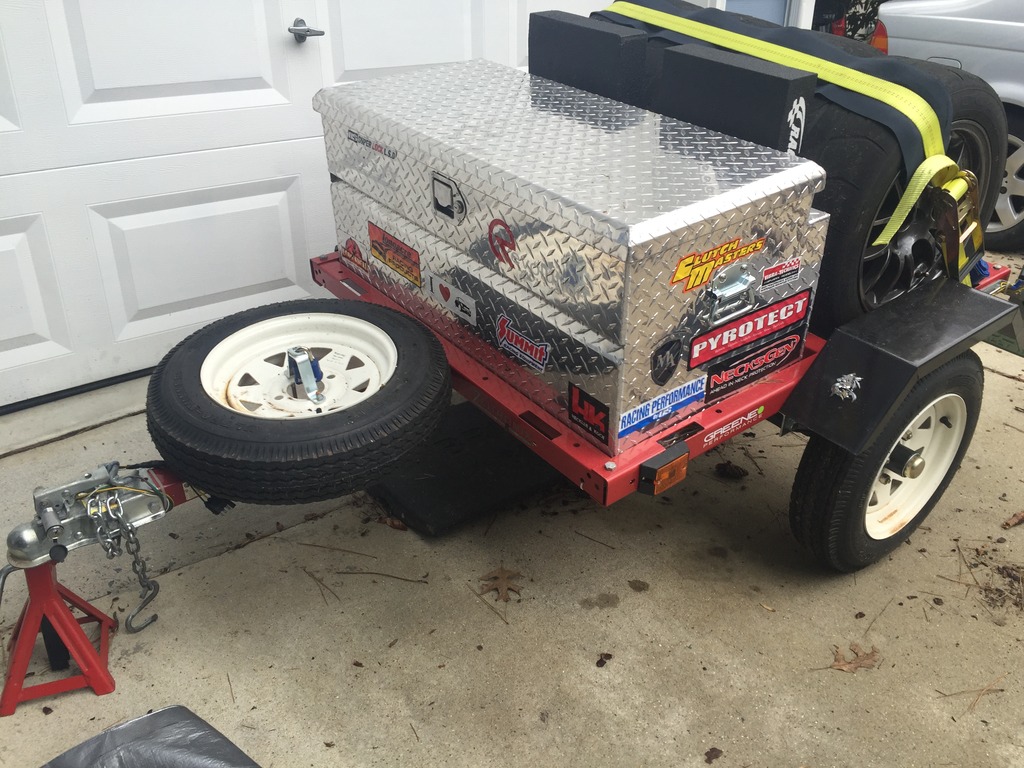
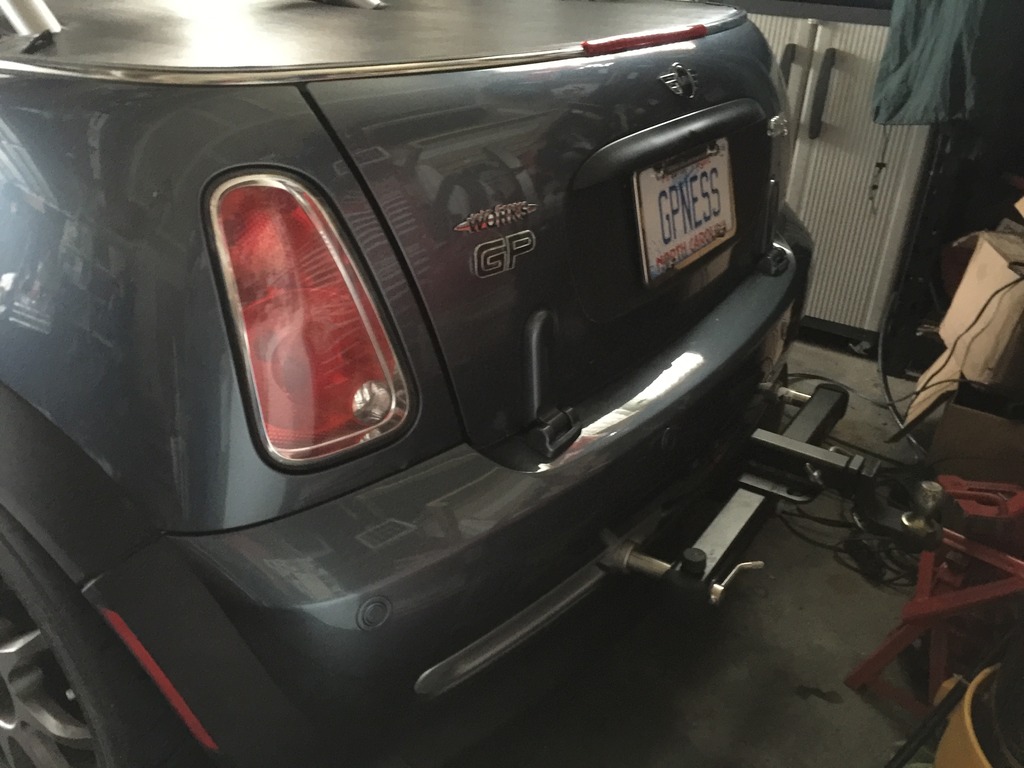
Finally, if I’m going to be driving a lot of miles to and from places, cruise control would be nice.
On the old car, I gave up cruise when I did the transmission swap. With the auto body harness, there were key bits missing (like clutch pedal switch wiring) that are necessary to support cruise. But with the new car, theoretically, cruise should be an option again.
But… I still want to keep my pretty carbon fiber steering wheel trim, instead of the ugly multifunction steering wheel (MFSW) buttons. Some of you may recall, on the old car, I did a hardware hack to use my old automatic shift paddles to control stereo volume. I decided to try a variant of this, to use the paddles to run the cruise control system…
Here are the important parts: the paddles, and a disassembled cruise control pod.

The paddles are designed to connect together and act interchangeably, so pushing or pulling either one would close one of two circuits. For the cruise, I need to simulate four button presses, so I’ll need to separate the paddles and wire them independently.
The MFSW pods work in sort of a master/slave configuration. The right side with cruise is the master with most of the electronics on it (e.g. for translating button presses to bus messages), and the steering wheel MFSW harness plugs into this. Then it has a connection to the left side audio/bluetooth pod, which is really just sort of a “dumb” board with buttons.
Buttons on both pods work the same way. The circuit board has two pairs of contact pads under each button (the things that look like gold circles with an “S” through them). On each pair of contact pads, the “outer” half of the contacts is a common ground shared by all the pads; the “inner” half is the “signal” pad.
Pressing the button shorts across one or both pairs of contacts with a conductive rubber button. I’m replacing the “shorting” action of the rubber button, with a circuit through the appropriate shift paddle. I do this by very carefully soldering jumper wires to the appropriate contact pads, and wiring these to the paddles.
On each paddle, there are three wires connected to the paddle switch: Red, Green and Brown. Pulling a paddle closes a circuit on the Green and Brown wires. Pushing a paddle closes a circuit on the Green and Red wires. So Green acts as a common ground for the switch.
Separate the paddles, tie green from both sides to one of the “ground” pads on the MFSW cruise button pod, and tie the other four wires to the signal pads as appropriate. In my case, I’m making the left paddle do on/off (push) and resume (pull), and the right paddle does +/accel (pull) and -/coast (push).
After testing circuits with a multi-meter to ensure I don’t have any inadvertent shorts, I carefully routed the wires, added plug connectors, and wrapped the board in electrical tape.
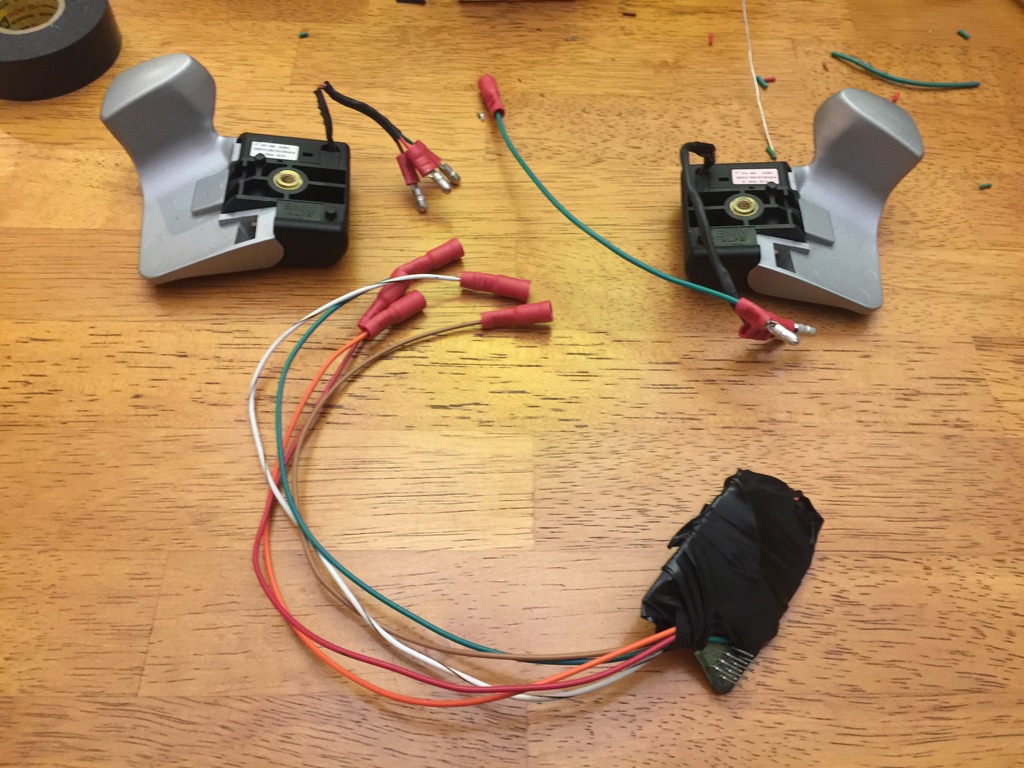
Install in the wheel, carefully routing all the wires to avoid pinches…
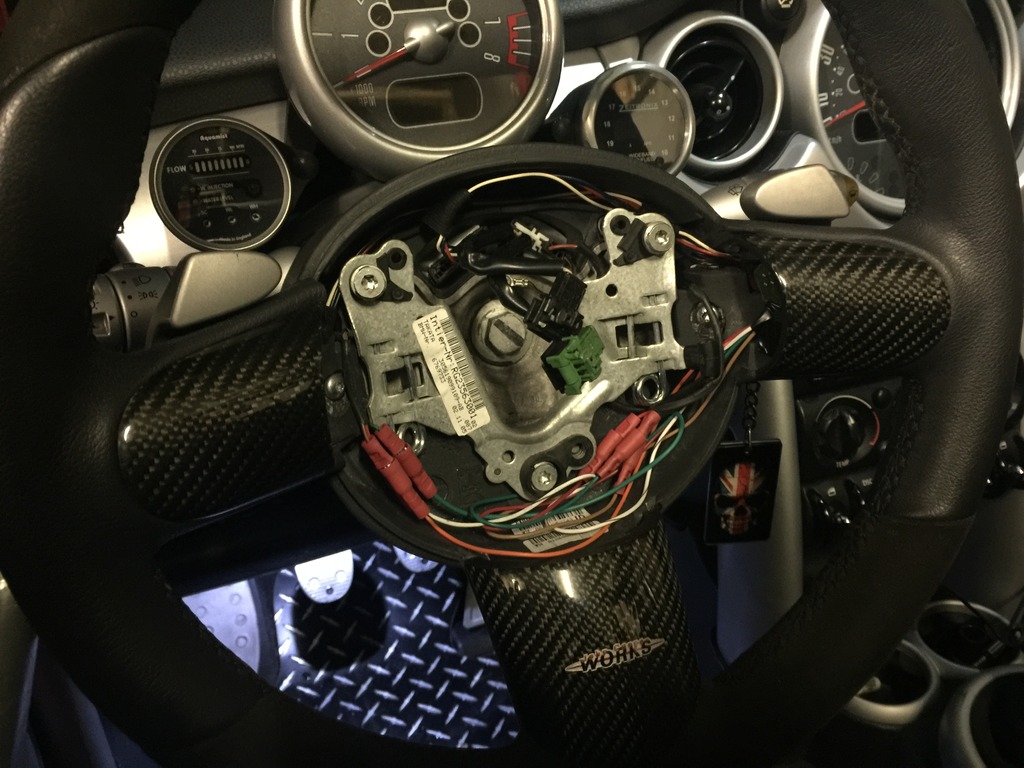
Moment of truth… start the car…
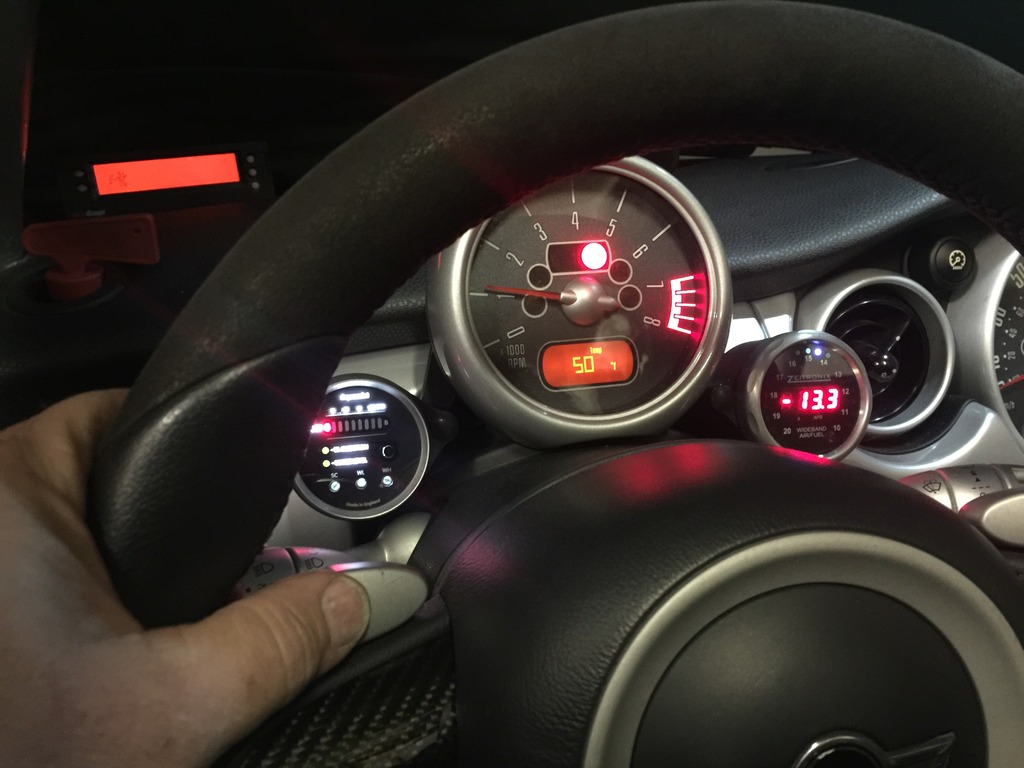
Buwahahahahaha!!!
That’s a good sign. On/off works as it should. I’ll do a full operational test as soon as it stops raining.
Hardwired my V1 and mounted it on the cabrio windshield header panel.
Ran charging cable for my roll cage iPhone mount, that I use with Harry’s Lap Timer.
Test drove between storms here. Stark Industries flappy paddle cruise control TOTALLY WORKS, first attempt. Amazing.
